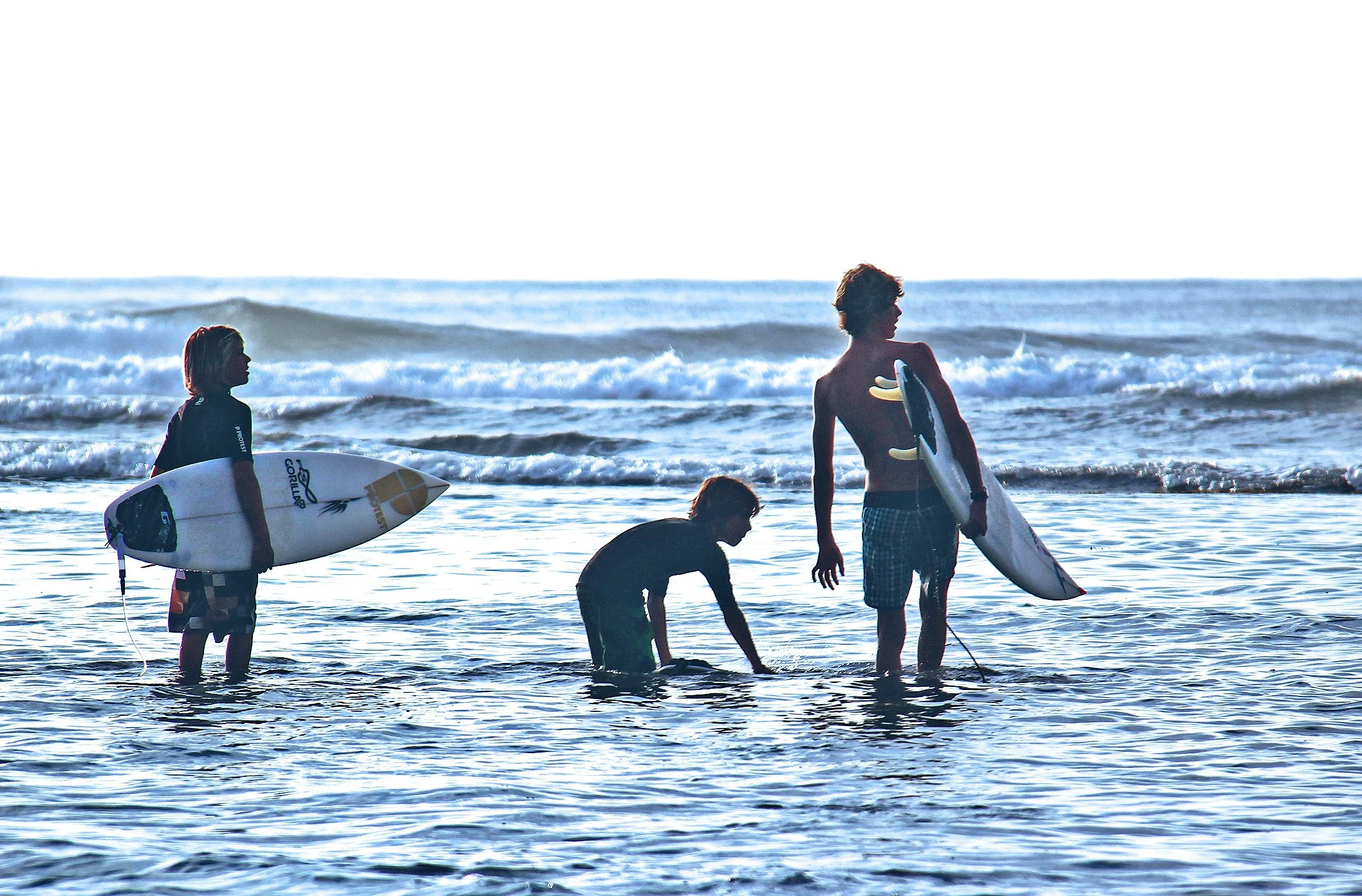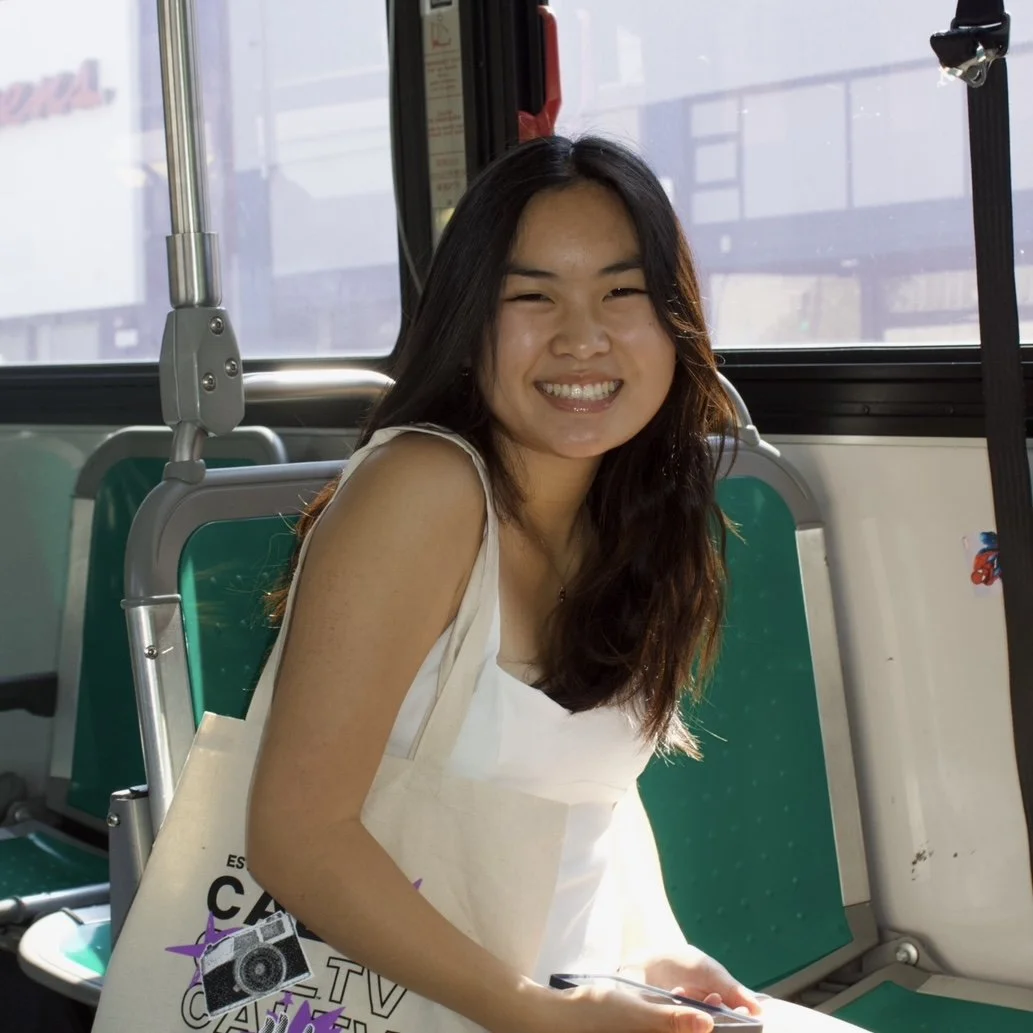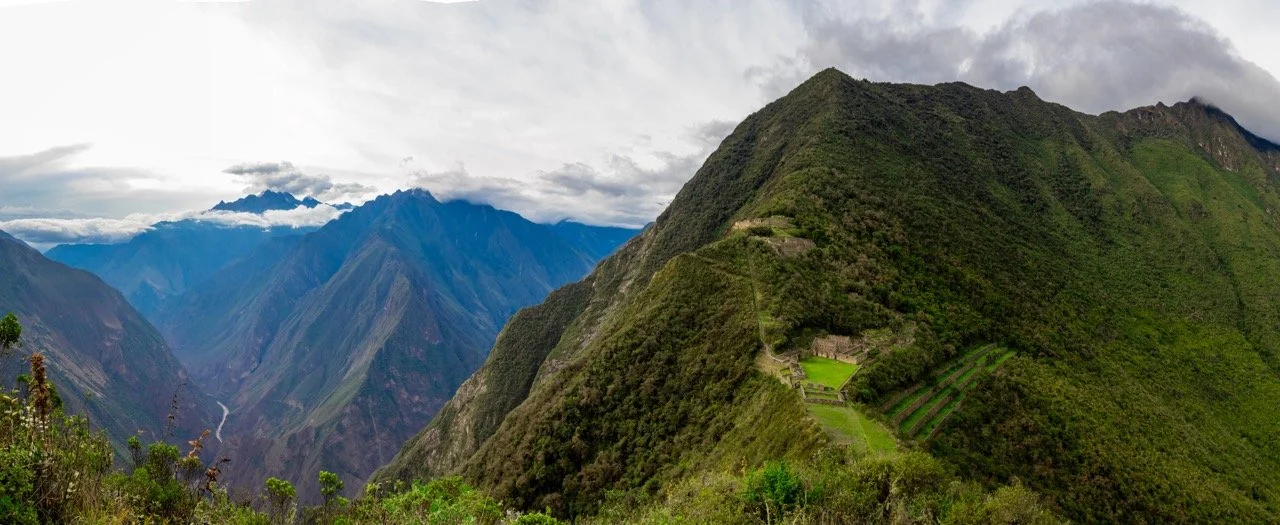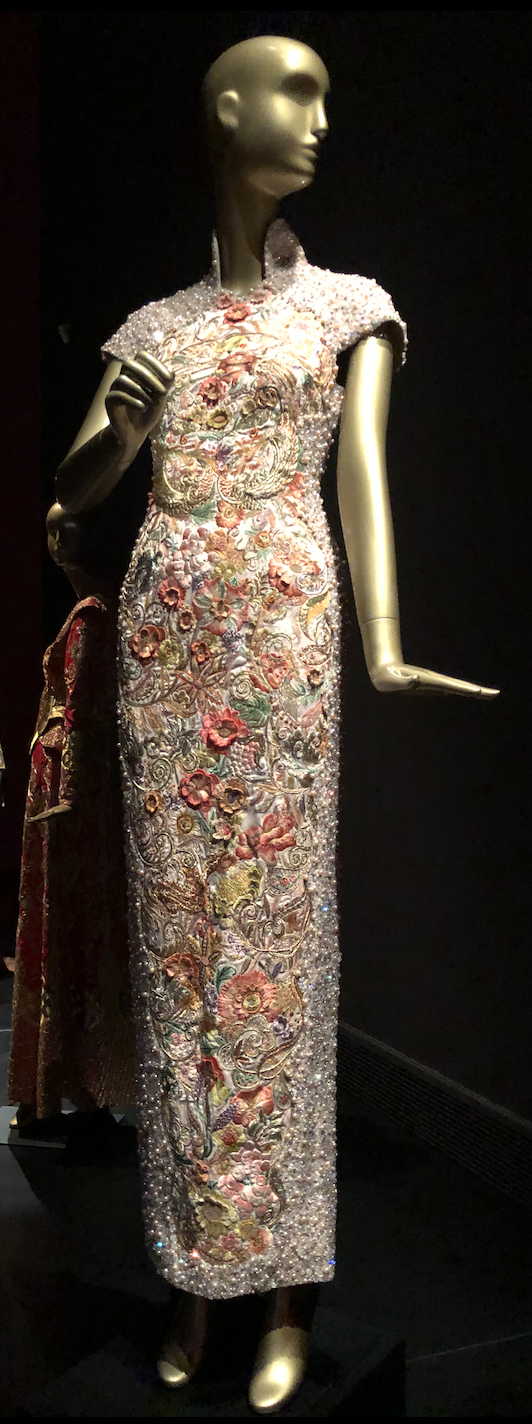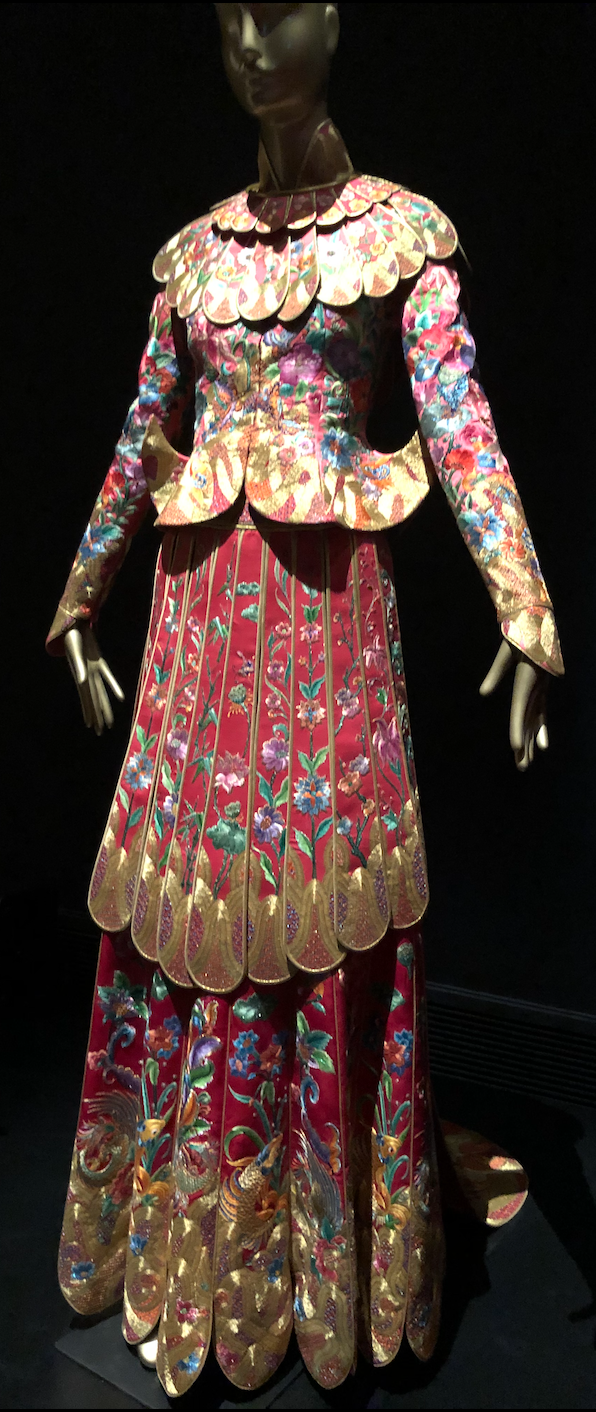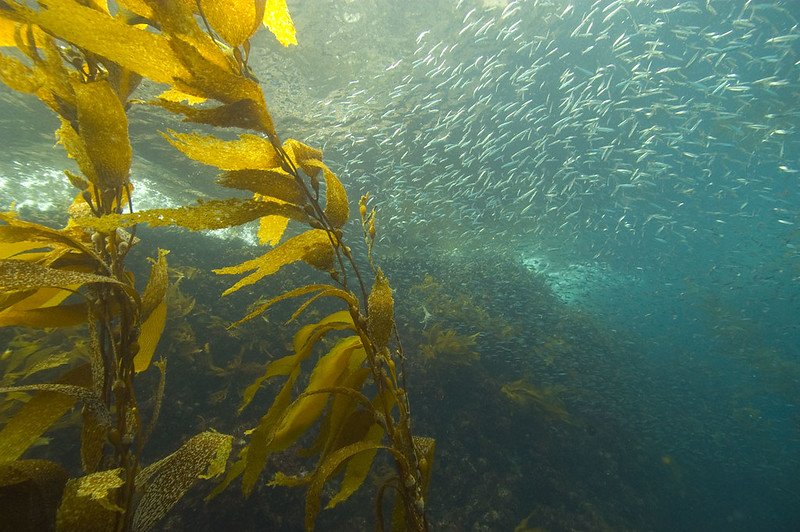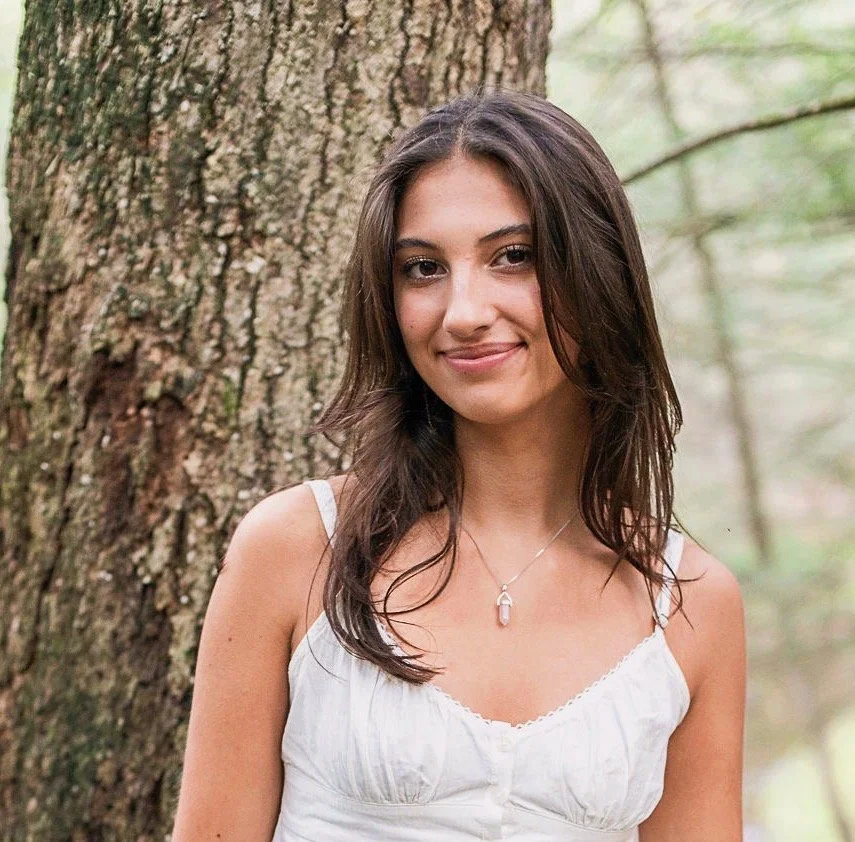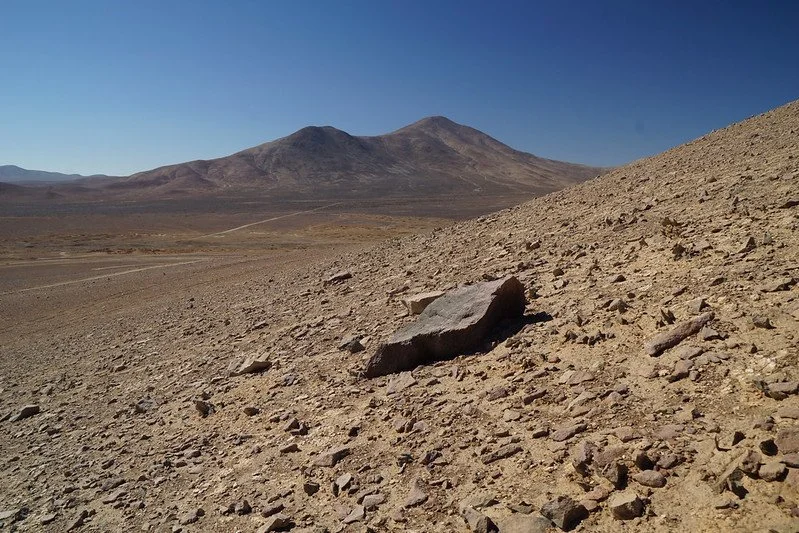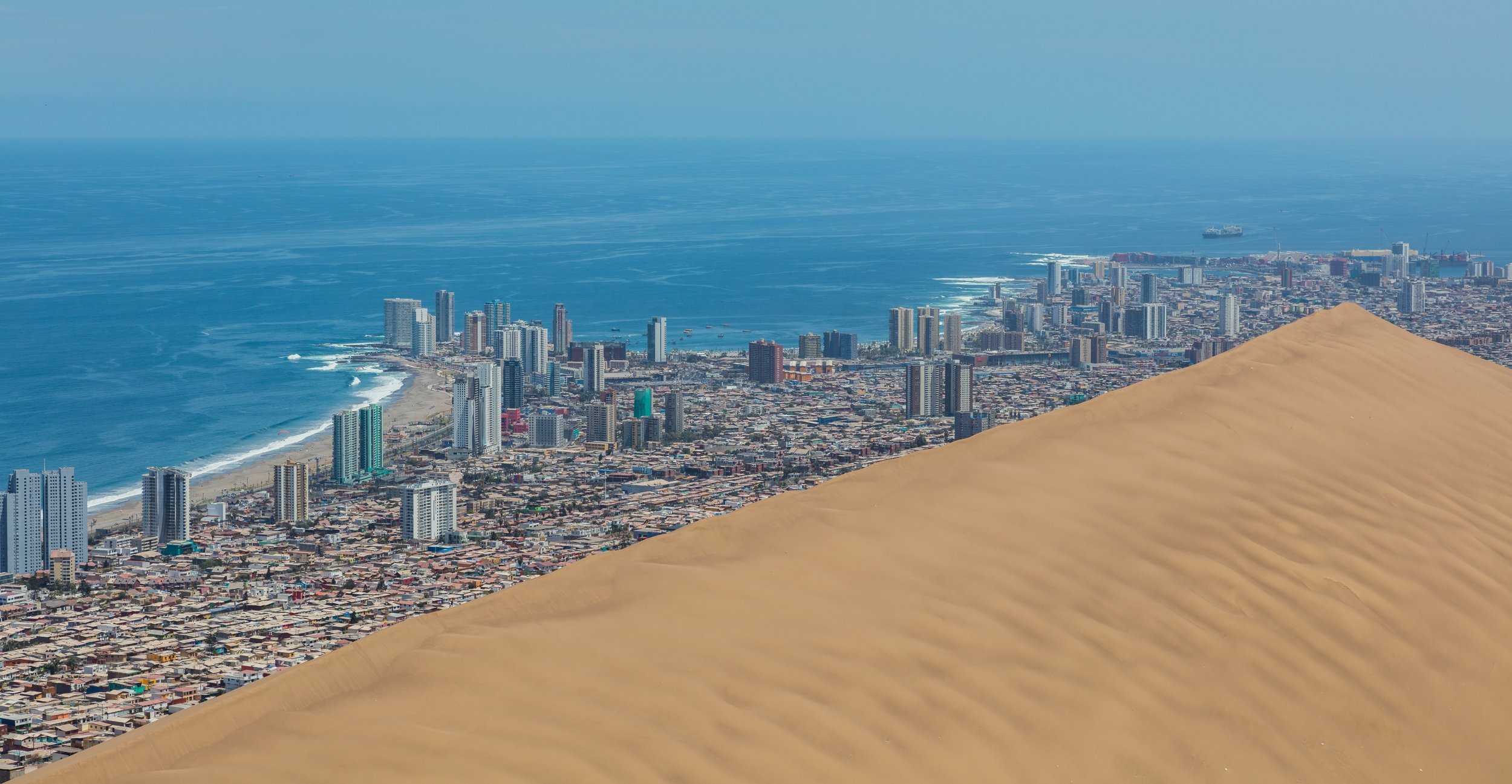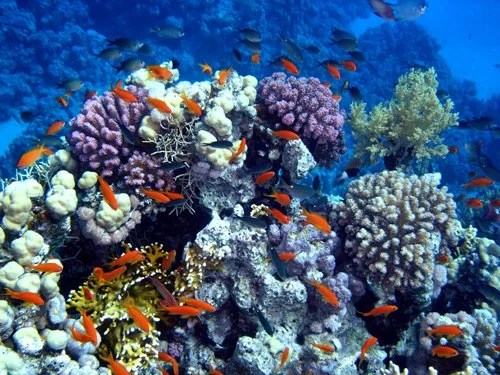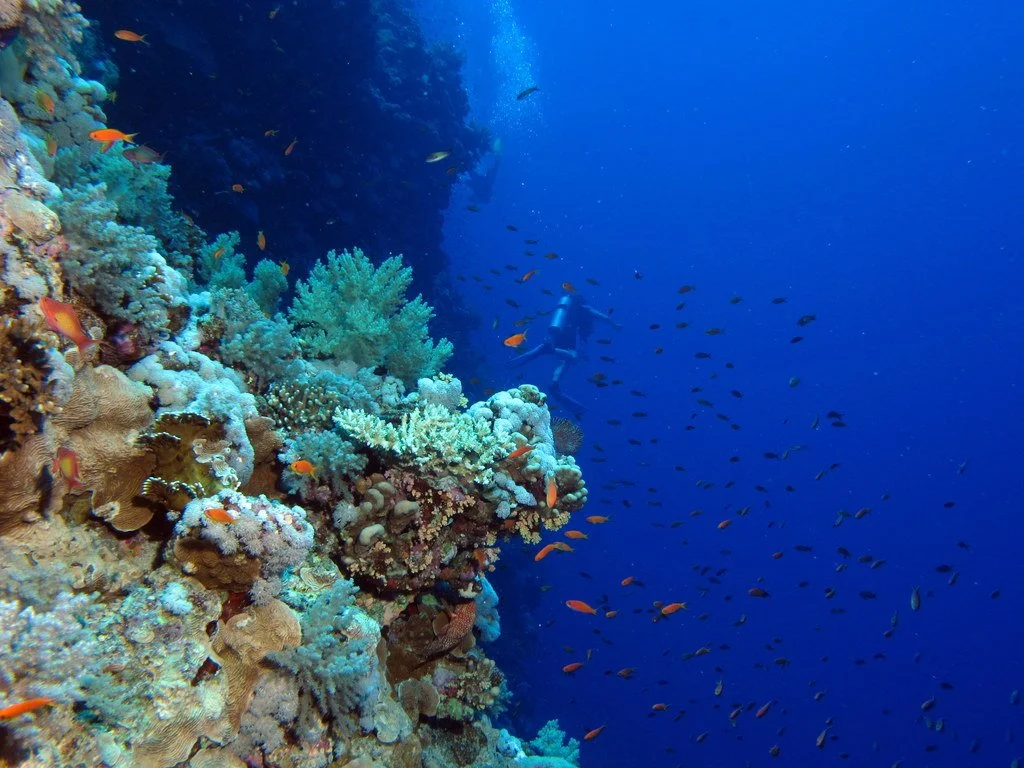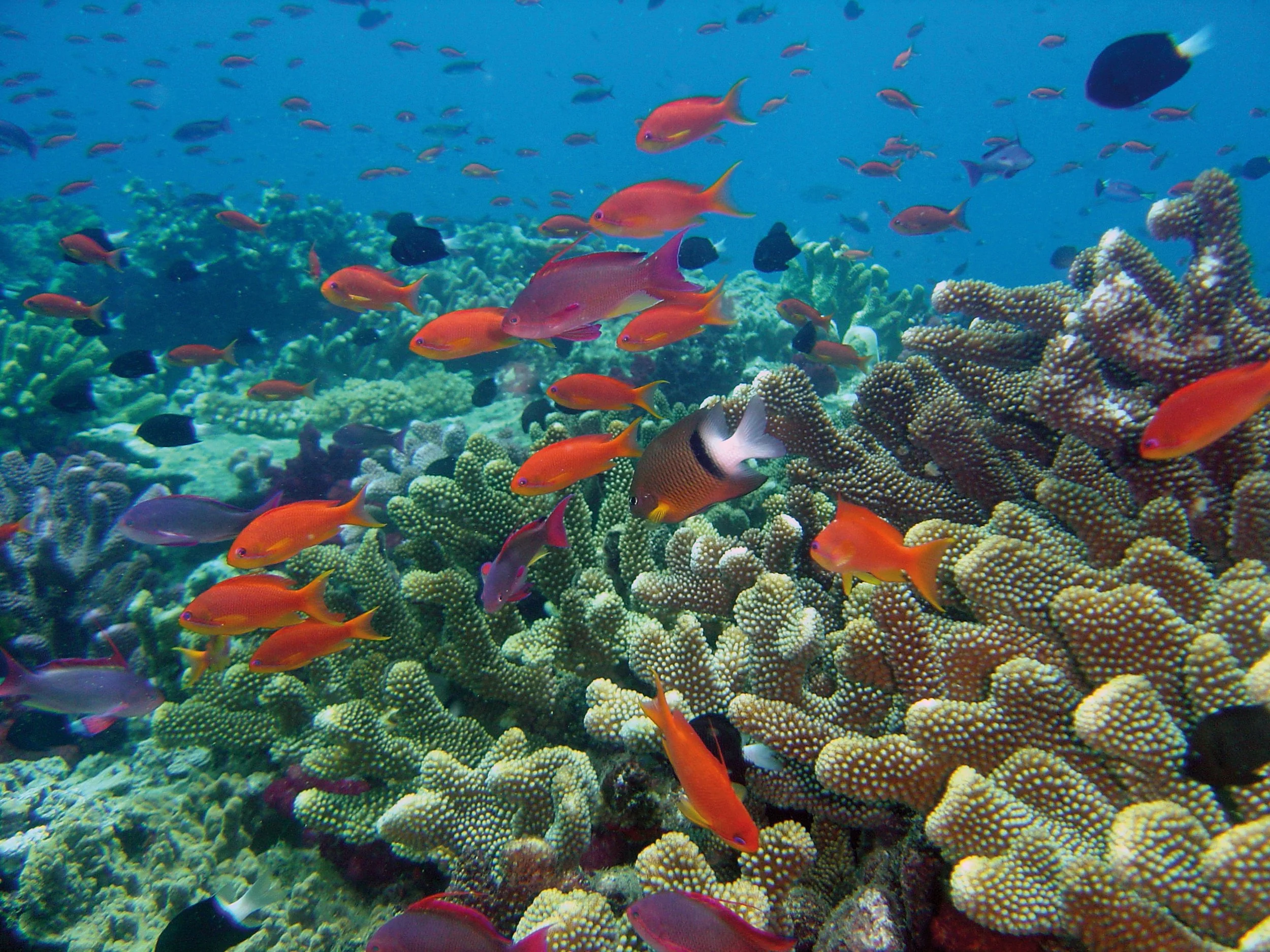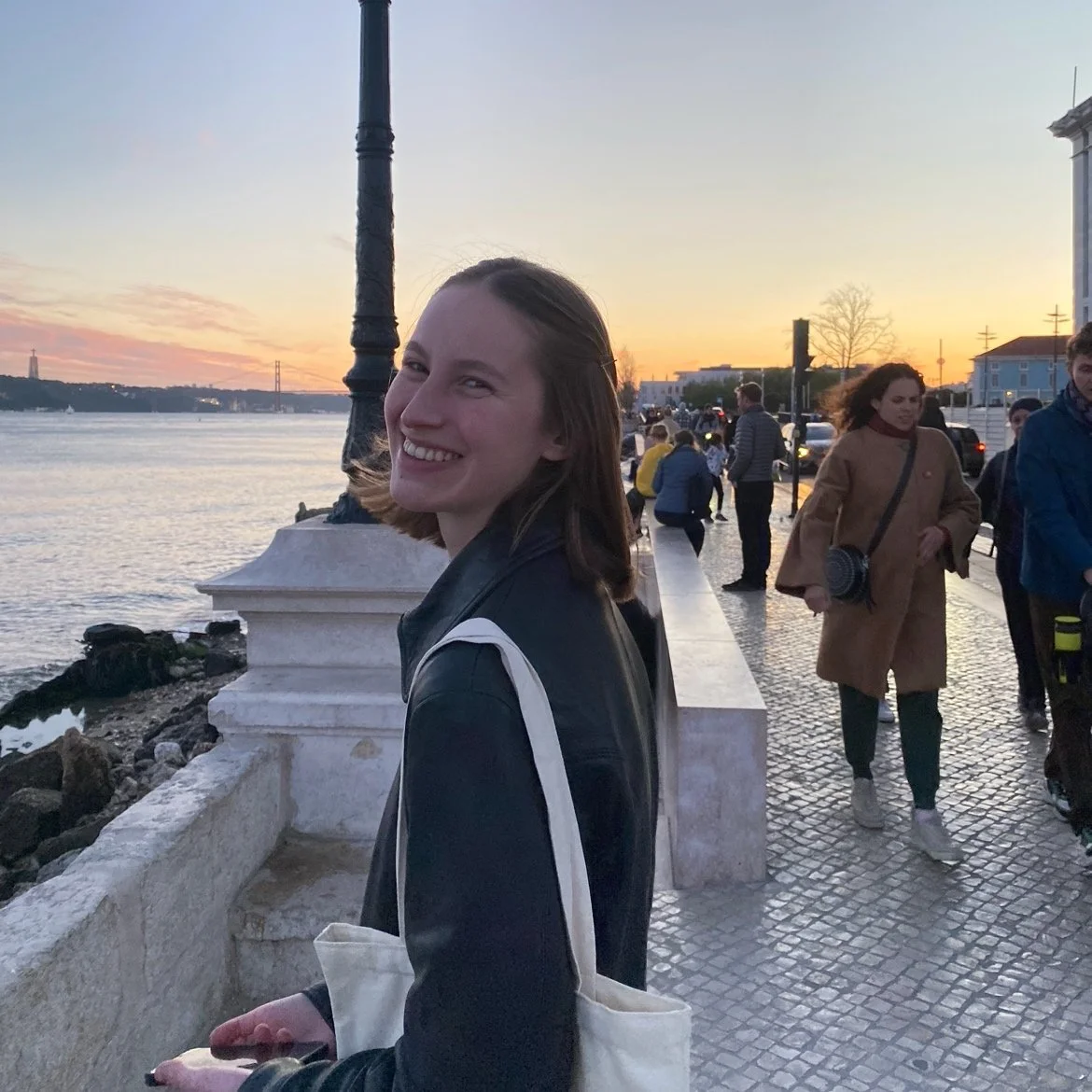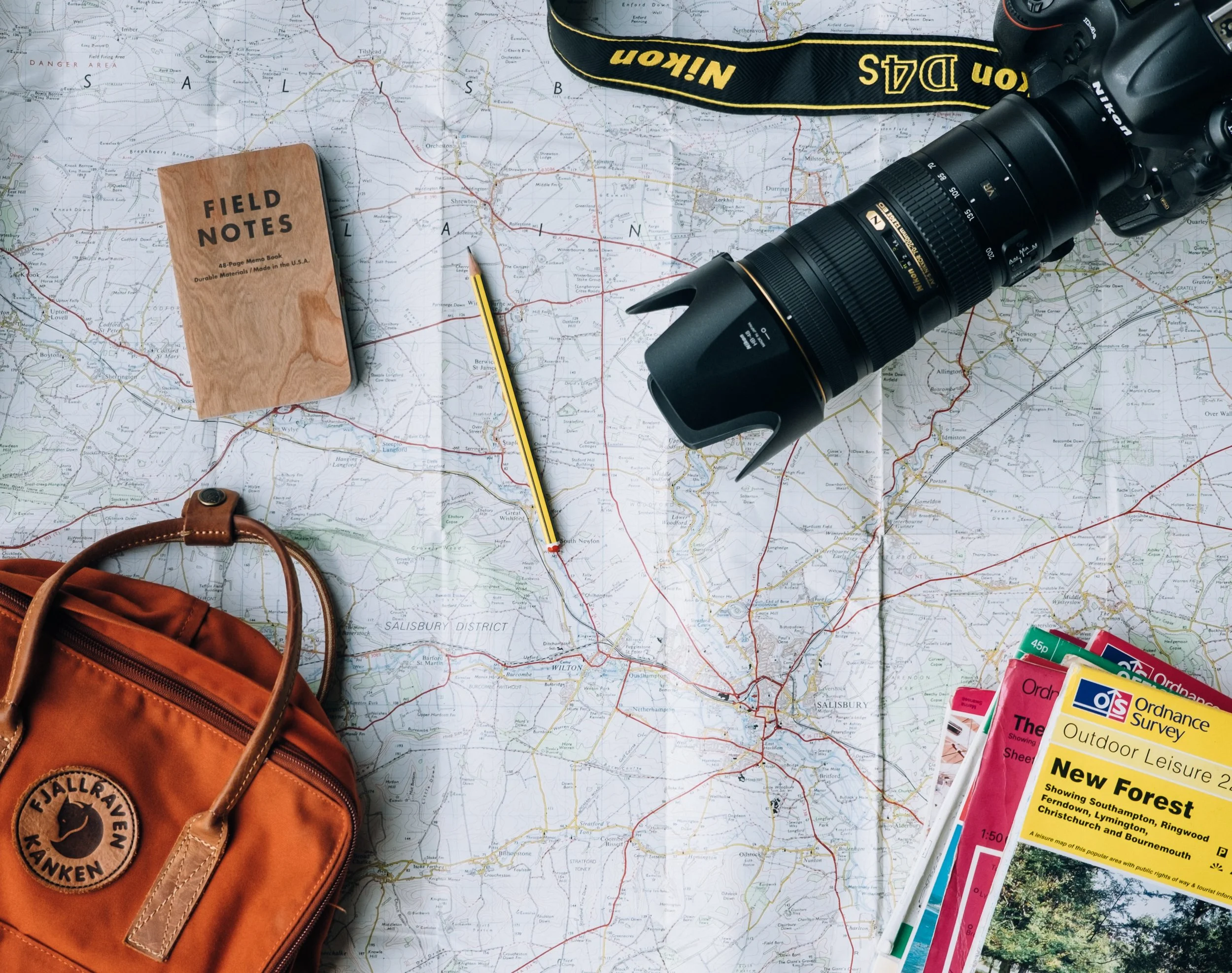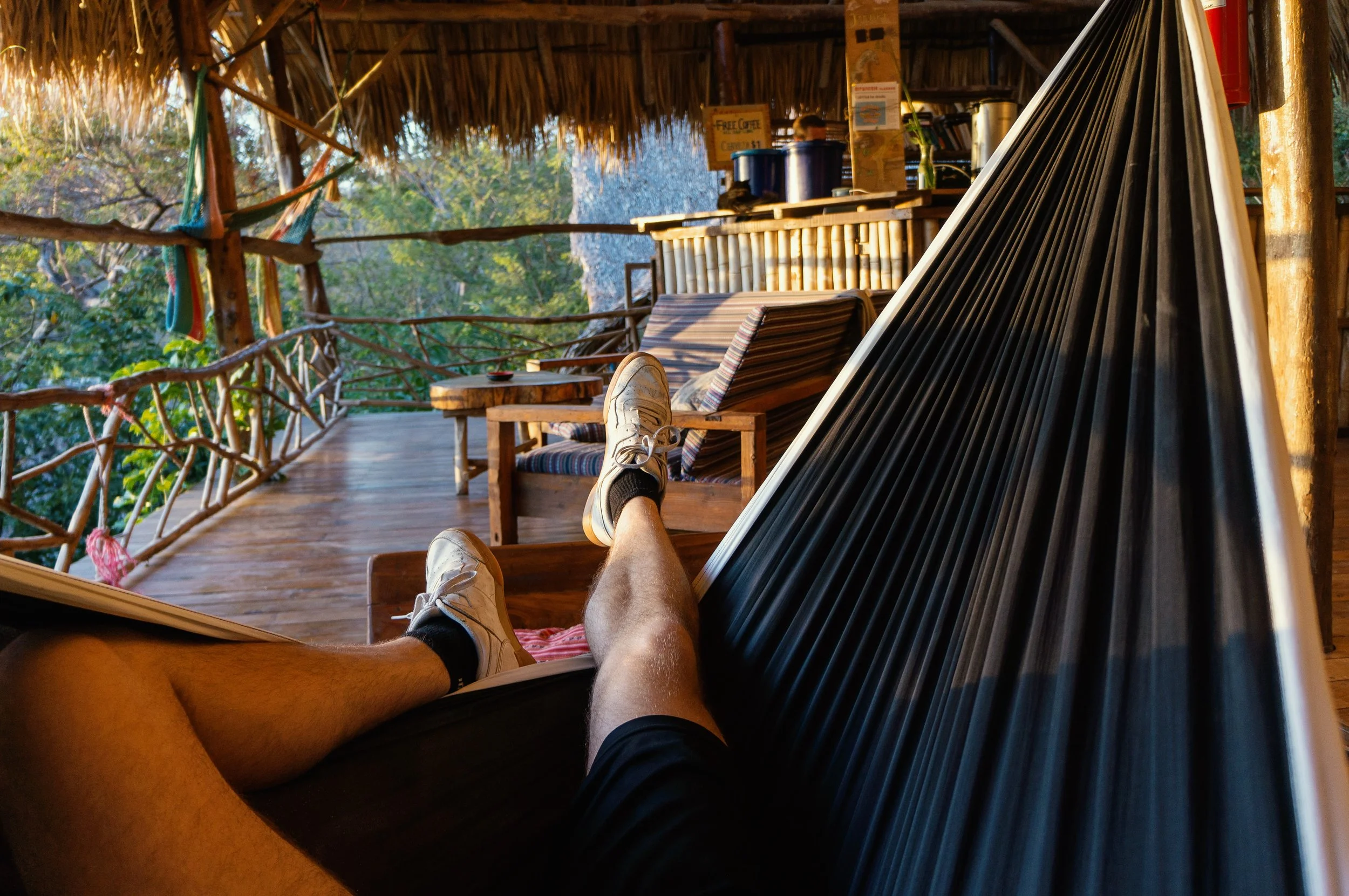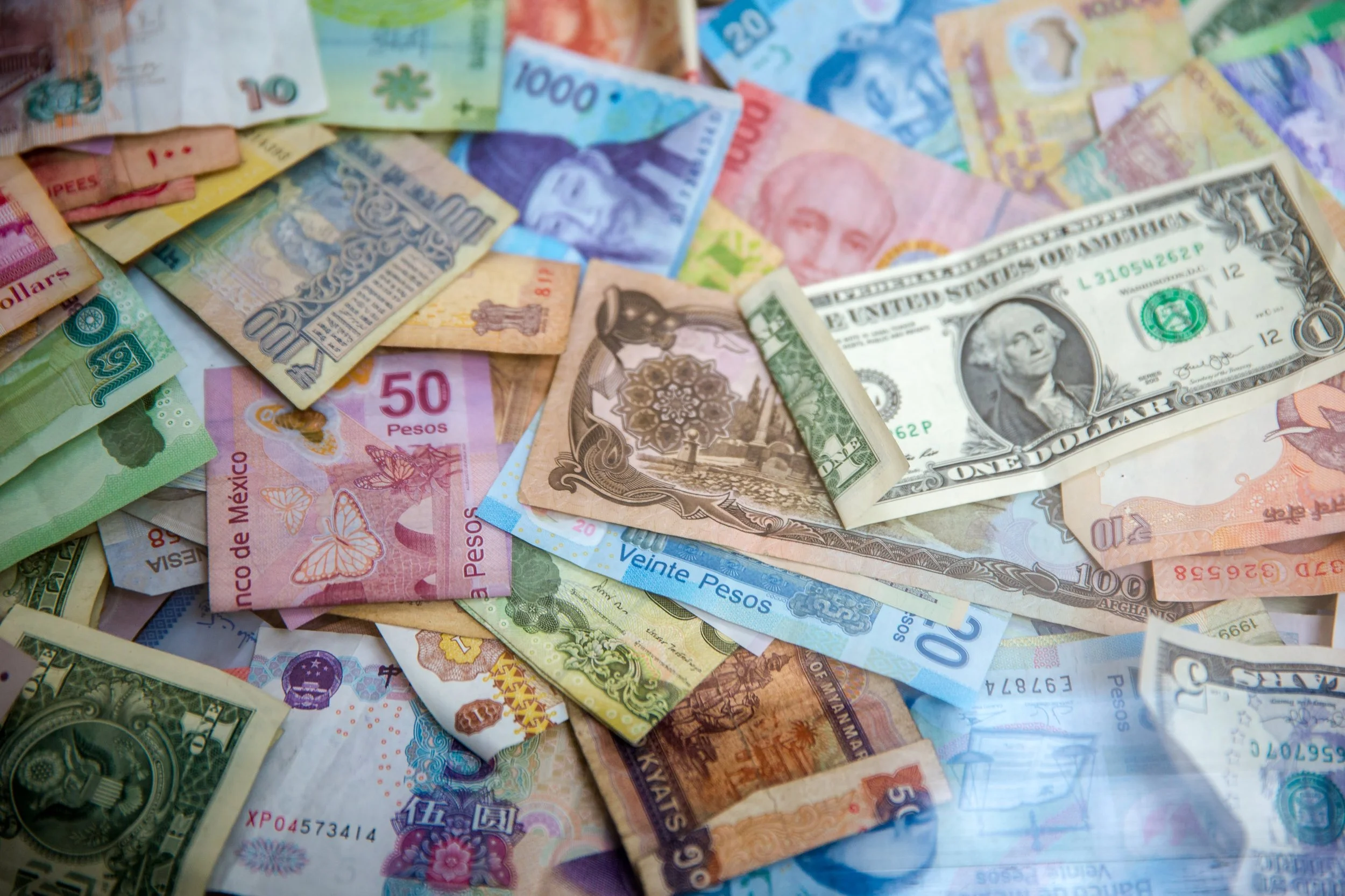Coastal communities worldwide are grappling with the widespread effects of a warming climate and rising sea levels, witnessing the devastation of their homes and increased economic difficulties.
Read More6 Surf Hostels Around the World
These budget-friendly accommodations offer more than a bed—they provide a community connection that unites oceans.
Main entrance of Playa Jaco, Costa Rica. Armando Olivo Martín del Campo. CC BY-SA 4.0
Wake up to crashing waves, grab your board, and paddle out. Surf hostels are not just places to rest your head; they’re miniature global hubs where travelers, surf enthusiasts and adventure seekers converge. Whether you’re a solo backpacker or part of a group, surf hostels foster friendships and shared experiences such as communal dinners, bonfires on the beach, and impromptu jam sessions with fellow travelers.
Hostels often offer surfboard rentals and lessons, making it an easy way to pick up new skills. Each hostel has its unique flavor, influenced by its location and culture. From Bali’s laid-back vibes to Portugal’s rugged beauty, you’ll taste local cuisines, explore places through their waters and witness unforgettable sunrises and sunsets.
1. 99 Surf Lodge - Popoyo, Nicaragua
Surfing in Popoyo, Nicaragua. Dylan Wooters. CC BY-SA 2.0
99 Surf Lodge in Popoyo, Nicaragua, is a sleek, low-slung modernist hotel that perfectly balances style and unpretentiousness. Situated right on the legendary surf beach of Popoyo, it offers a unique blend of comfort and adventure in a region that is hospitable yet not overdeveloped. Each room boasts an ocean view, allowing guests to check surf conditions from the comfort of their beds. The bungalows and suites, which can accommodate up to four guests, feature private verandas to enjoy the constant offshore breeze. Despite its design-hotel aesthetics, 99 Surf Lodge remains affordable, making it a great value destination. Surfing is the main attraction, but guests can enjoy various water activities and nearby mountain hikes. The hotel’s gym and the on-site restaurant, Taberna 99, provide additional amenities to fuel and rejuvenate guests. With yoga classes, retreats and two seasonal restaurants, including Mesquite, 99 Surf Lodge ensures a memorable stay. Whether surfing, dining or simply relaxing, this beachfront retreat perfectly blends modern comfort and natural beauty. 99 Surf Lodge is a higher-end surf hostel and rates start at $130 per night.
2. San Sebastian Surf Camp (Stoke Travel) - San Sebastian, Spain
Scenic view from the comb of the wind ride to the Ondarreta beach. Laura Peña. CC BY-SA 3.0
San Sebastian Surf CAMP, an all-inclusive surf house in the Spanish Basque Country, offers an exhilarating blend of surf, yoga, and vibrant nightlife. Since 2005, Stoke Travel’s Surf Camps have been the go-to destination for exploring San Sebastian and the Basque Country, providing an unbeatable combination of surfing and partying. Now located in a converted Basque farmhouse near Zarautz, the camp has only improved. The communal atmosphere is enhanced by staff who double as surf instructors and prepare all meals, ensuring a seamless experience. The basic package includes dorm accommodation in the scenic Pagoeta nature reserve, healthy homemade meals, daily pickups to Zarautz, introductory surf lessons, and daily yoga classes. Guests can also enjoy unlimited access to surf equipment, local activities, and an open bar for a small fee. With hearty home-cooked meals, welcoming vibes, and awesome parties, this surf camp promises an unforgettable experience. San Sebastian Surf CAMP offers a unique and immersive adventure in a stunning natural setting. There is a two-day minimum and rates start at $50 per night. Get in touch with San Sebastian Surf Camp (Stoke Travel) here.
3. Hostel & Surf Camp 55 - Ericeira, Portugal
Surfing at Praia do Matadouro. Web Summit. CC BY 2.0
Hostel & Surfcamp 55 in Ericeira, Portugal, is a fantastic destination for surfing beginners, embodying the slogan “When you feel the Ericeira 55 vibe you don’t want to leave…” Overlooking the ocean and located in the heart of Ericeira, this unique hostel offers a true surf and travel experience. It accommodates up to 22 guests in seven thematic rooms with sea views, providing a relaxed and colorful atmosphere. Guests can enjoy surf lessons, guiding and equipment on-site, as well as daily yoga retreats. The communal lounge area is perfect for socializing, and the shared kitchen allows guests to prepare their own meals or join themed dinners and wine tasting sessions. Located just a five-minute walk from the beach, Hostel 55 also offers free WiFi and various discounts on local activities, including bicycle and board rentals. With clean facilities, friendly staff, and a vibrant communal feel, Hostel & Surfcamp 55 ensures an unforgettable stay in the picturesque fishing village of Ericeira. The nightly rate is $40 and you can contact them here Hostel & Surf Camp 55.
4. Farm Hostel - Canggu, Indonesia
Young surfers in Bali, Indonesia. Tiket2. CC BY 2.0
The Farm Hostel in Canggu, Indonesia, offers an exceptional experience for travelers. With five different types of dorms, all air-conditioned and equipped with en-suite bathrooms, the hostel ensures maximum comfort and privacy. Each bed is larger than average, featuring curtains, a reading light, an international power outlet, and a large locker for personal belongings. Located just 1.2 miles from Batu Bolong Beach and Canggu Beach, The Farm Hostel provides accommodations with an outdoor swimming pool, free private parking, a garden and a shared lounge. Guests can enjoy free WiFi, a bar, and a restaurant serving international cuisine with vegetarian, dairy-free, and vegan options. The hostel also offers a paid airport shuttle service.
Nestled at the end of a peaceful cul-de-sac surrounded by rice fields, banana trees, bamboo and a running stream, The Farm Hostel is a tranquil retreat. Despite its serene location, it is just minutes away from great surf spots, tasty food, vibrant nightlife, and excellent coffee. Since its opening in 2015, The Farm has grown from 22 beds to 118 beds, featuring nine mixed dorms and seven female dorms. With high-speed internet, a small breakfast included, two pools, multiple common areas and a central location in Canggu, The Farm Hostel is a must-stay destination in Bali and rates start at $36 per night.
5. Rosemary Hostel - Florianópolis, Brazil
Praia Mole, Florianopolis, SC, Brasil. Papa Pic from Eldorado, Argentina. CC0
Rosemary Hostel in Florianopolis, Brazil, offers a unique and empowering experience for travelers. Located just a minute’s walk from Trilha Da Galheta and a short distance from Praia da Barra da Lagoa, this hostel provides an ideal setting for reconnecting with nature. With eight rooms featuring climate control, private balconies and mini fridges, guests can enjoy a comfortable and convenient stay. The hostel is well-connected to local attractions, including the Open Sea Turtle Museum and Barra da Lagoa Natural Pools. Guests can savor South American cuisine at the nearby Restaurante Maria & Maria or explore the vibrant Praia Barra da Lagoa district. Rosemary Hostel is designed to challenge both body and mind, offering exceptional accommodation, healthy meals and inspiring activities. Whether you’re looking to relax or embark on an adventure, Rosemary Hostel promises a memorable stay with its international family, the Dream Team. The Rosemary Hostel’s nightly rates begin at $33, and there are several different types of accommodation.
6. ITH Beach Bungalow Surf Hostel - San Diego, CA, USA
Surfing in San Diego, California. Bengt Nyman. CC BY 2.0
ITH Beach Bungalow Surf Hostel in San Diego offers an unparalleled experience right on the boardwalk overlooking the ocean in Pacific Beach. Known for its cozy beds, beachfront facilities, and friendly hosts passionate about showcasing local culture, this hostel invites guests to bring their beach clothes and flip-flops and immerse themselves in the surf lifestyle. The hostel emphasizes sustainable lodging, cultural contact and providing a unique hosted experience. Guests can enjoy oceanfront accommodations just 1.9 miles from Belmont Amusement Park, with amenities including BBQ facilities, a garden and a shared lounge. A daily free continental breakfast is provided, featuring bread, fruit, cereal, oatmeal and coffee. The hostel also offers a 24-hour front desk, indoor lounge with workstations and table tennis. With several room options, including female-only, coed dorms, and private rooms, all with ensuite bathrooms, ITH Beach Bungalow Surf Hostel ensures a comfortable stay. The large private outdoor deck is perfect for socializing, checking out the waves and soaking up the sunshine. Hosted social events, surfboard, wetsuit and bike rentals, as well as partnerships with top-rated wellness and yoga studios, make this hostel a legendary spot for travelers since the 1980s. Whether you’re surfing, relaxing or exploring, ITH Beach Bungalow Surf Hostel promises a social, friendly, and fun atmosphere with rates starting at $49 a night
Julz Vargas
Julz is a student at Wellesley College studying Anthropology and Spanish. She grew up in Los Angeles, CA, and has studied all around the world in places such as Costa Rica, Greece, Iceland, and Spain. She is passionate about employing writing as a tool to explore human connection and diversity. Julz aspires to foster cross-cultural connections through community-based research, amplifying inclusive and diverse media about global cultures, foods, and people, to encourage individuals to engage more wholly with the world.
Road Trip Culture in Scandinavia
From the southern coast of Denmark to the northern lights of Sweden, experience the best road trip destinations in Scandinavia.
Read MoreThe Direction of Iran’s Woman, Life, Freedom Movement
With tensions high domestically and internationally, women both inside and outside of Iran are cynical that things will change.
A mural in support of the Jin, Jiyan, Azadi (Woman, Life, Freedom) movement. Herzi Pinki. CC BY 4.0
For many in Iran, history can be broken up into two epochs: before 1979 and after. Women, in particular, find significance in this demarcation because Iran’s 1979 Islamic Revolution brought the expansion — and then constriction — of their rights. These tensions surrounding women’s role in Iranian society came to a head in 2022, when the widespread Woman, Life, Freedom movement put them on global display. But the Woman, Life, Freedom movement didn’t spawn out of nowhere, and it’s important to look at its past when considering its future.
Women at the 1979 International Women’s Day protests in Tehran. Mohammad Sayad. CC0
Prior to the Iranian Revolution, women saw their rights and opportunities gradually expand as part of the country’s modernization efforts. The state wanted to Westernize itself, and this manifested in women being mandated (sometimes violently) to not veil themselves, per a 1936 decree. But the revolution saw the nation shirk its Western influences — thanks in large part to women. While some mobilized public demonstrations, others acted as nurses and first responders. Few fought in guerilla conflicts, but many wore hijabs to protest the monarchy's 1936 ban on veils, linking modest dress with the revolution’s vision of a new Iran.
However, after the revolution succeeded and the pro-Western monarchy was overthrown for an Islamist theocracy, women’s roles became more limited. In an interview I conducted with Iranian Circle of Women’s Intercultural Network steering committee member Ruja Kia, she affirmed, “Adding the religious components of private life to the law of the land never makes things easier for women.”
The revolution placed nearly all Iranian state power in the role of “the supreme leader,” where it still remains today. As both a religious and political authority, the first supreme leader, Ayatollah Ruhollah Khomeini, sought to curb women’s post-revolution rights and professional opportunities in favor of a return to traditional domesticity. Further, after revolutionaries associated modesty with the new Islamic Republic, Khomeini mandated women to cover themselves with hijabs. What had once been a symbol of dissent and autonomy became a violently imposed law.
The 1979 hijab mandate notably came under international scrutiny in 2022, following the death of Mahsa Amini. Iran’s Guidance Patrol, or morality police, arrested Amini for an “improper hijab.” She died in their custody three days later — officially of a heart attack but allegedly of police brutality (In our interview, Ruja Kia also noted that Amini was Kurdish, an Iranian ethnic minority that often faces discrimination).
A man protests in support of the Woman, Life, Freedom movement following Amini’s death. Ilias Bartolini. CC BY 2.0
Amini’s death sparked mass protests — not only in Iran but also around the world. Internationally, the rallying cry was “woman, life, freedom,” a translation of the Kurdish feminist slogan “Jin, Jiyan, Azadi.” For its criticisms against the compulsory hijab, the morality police and the Islamic Republic in general, the Woman, Life, Freedom movement has been intensely repressed by Iran’s current supreme leader Ayatollah Ali Khamenei. Iranian security forces have killed more than 500 demonstrators and arrested thousands across the country.
“I say explicitly that these [Woman, Life, Freedom] riots and this insecurity were a design by the US and the occupying, fake Zionist regime [Israel],” Khamenei said in 2022, as reported by Al Jazeera. On a broader scale, Khamenei believes that the hijab is a religious and therefore, moral obligation. He further contended that gender equality is a Western plot designed to weaken Iran: “[The West] feel[s] that [Iran] is progressing towards full-scale power and they can’t tolerate this.” Because of and in spite of Khamenei’s deadly response, the Women, Life, Freedom movement gained international prominence, making the future of women’s rights in Iran an unavoidable and salient issue in the recent election.
Two women attend a Woman, Life, Freedom protest wearing past versions of the Iranian flag. Taymaz Valley. CC BY 2.0
Masoud Pezeshkian, Iran’s newest president, campaigned on a reformist platform, asserting a desire to steer the nation toward greater peace. Now, after taking office in July, he has a chance to do so. For many nations that have tensions with Iran, having the moderate Pezeskian in office is cause for cautious optimism. Inside Iran’s borders, however, women are still reeling from the pushback Woman, Life, Freedom received two years ago and are thus more cynical about the promise of Pezeshkian’s election. “Although we might see more moderate approaches in bigger metropolitan areas, women across the rest of Iran will stay controlled by family customs and norms,” said Ruja Kia.
As the only reformist in a field of six candidates, Pezeshkian’s positions on women’s rights stood out as the most progressive. Frequently invoking his daughter, a chemist, and the memory of his late wife, a gynecologist, he spoke of increasing women’s presence in the professional sector: “A woman is not a servant at home,” Pezeshkian wrote on X.
Regarding the mandatory hijab, Pezeshkian has expressed support for relaxing the mandate: “The behavior of Iranian girls will not change. Just as the previous [1936 laws] could not forcibly remove the hijab from the heads of our women, you cannot force them to wear the hijab by passing a law,” he wrote in another X post. But some, like Kimia Adibi, the President of UC Berkeley’s Iranian Students’ Cultural Organization, believe that Pezeshkian’s words are empty promises. “[Pezeshkian’s] not actually pushing for women’s freedom and change because if he were, he never would’ve been allowed to run,” Adibi said to me. “Anyone who’s an actual radical reformist and believes in women’s freedom and not forcing the mandatory hijab… like, they’re not even going to make it to the candidacy level.”
A woman at a Woman, Life, Freedom protest. Matt Hrkac. CC BY 2.0
Pezeshkian’s parliamentary record shows that he’s supported restrictions on women’s rights in the past, and alongside the posts he made calling for women’s rights, he also posted to X, “All of us move towards dignity and power according [...] to the general policies of the supreme leader.”
For Iranian feminists, the zeitgeist has not shifted. While it’s not impossible, they say, for Pezeshkian to achieve some reform — “little shifts,” as Adibi put it — so long as religion and politics remain married to an ultimate authority who violently rejects gender equality, women’s rights in Iran will not improve much under the new president.
A Woman, Life, Freedom protest sign in Kurdish, English and Persian. Pirehelokan. CC BY 4.0
“I’ll speak for myself,” Adibi said, “but I think most Iranians are not super optimistic about the direction of women’s rights under this president. And they won’t be under the next president, or the next president, under however many presidents until the supreme leader is removed from power.”
When speaking with an admin from the Instagram account @irans.feminist.liberation, I found this feeling re-affirmed. “The future for women and minorities in Iran remains bleak,” she said, “unless there is significant internal pressure for change.
Bella Liu
Bella is a student at UC Berkeley studying English, Media Studies and Journalism. When she’s not writing or working through the books on her nightstand, you can find her painting her nails red, taking digicam photos with her friends or yelling at the TV to make the Dodgers play better.
Redefining Tourism in India
A Canadian shares the untold story of ecotourism in India’s state of Meghalaya.
Read MoreTunisia: Discover Ancient Rome in North Africa
Thousands of years later, Tunisia’s rich history as part of the Roman empire is still on display.
A view of Carthage Palace in Tunisia. Farah Jack Mustaklem. CC BY-SA 4.0
For many, the word “Rome” evokes images of the city in Italy. Its days as the center of one of the largest empires in history ended millennia ago, and today, popular culture has largely moved on, TikTok memes aside. But the Roman Empire was far bigger than many now imagine, stretching well into the modern-day Middle East and across North Africa. Today, the empire’s ruins remain visible in the furthest reaches of its territories.
Tunisia, for instance, is home to a wealth of ancient Roman history. Sitting on the edge of the Sahara Desert, the African nation has found fame with tourists who admire its gorgeous beaches. However, beyond the nation’s natural beauty and high-quality resort towns, Tunisia's territory was once at the very heart of the Roman empire in Africa. Ranging from the remains of villages to the shell of the great city of Carthage, ancient ruins dot the country’s landscape. Almost every major city features ancient Roman artwork, architecture and history. While Tunisia is gorgeous in its own right, the country possesses a richer history than almost anywhere else in the world.
The best-preserved example of Imperial Rome’s presence in Tunisia is El Jem. Estimated to have held up to 35,000 people at once, El Jem is not only the largest amphitheater in Africa but one of the largest in the world. Incredibly, the entire building is supported by stone arches, the edifice resting on a flat plain with no hills or rises for balance. The structure’s underground passages also remain largely intact, and tours are led daily through the entire grounds of the colosseum.
A panoramic view of El Jem. Diego Delso. CC BY-SA 4.0
Another incredible part of history hidden away just outside the Sahara is the ancient city of Sbeitla, home to some of the best-preserved temples from the Byzantine Empire. Outside Sbeitla, visitors can also tour the ruins of Byzantine public baths, a Roman Forum that houses ancient temples to Minerva, Jupiter and Juno, and a series of Catholic basilicas.
The Roman Forum in Sbeitla. Dennis Jarvis. CC BY 2.0
In addition to its ancient history, Tunisia provides visitors with the unique opportunity to visit the Sahara Desert. Numerous tour companies offer frequent excursions into the desert on camelback. These tours range from day trips to two or more days of camping and bivouacking in traditional Bedouin style. These tours are a once-in-a-lifetime opportunity to experience the lifestyle of the nomadic tribes local to Tunisia.
A camelback tour of the Sahara Desert. Vaida Tamošauskaitė. CC0
Despite all of the wonderful experiences that Tunisia presents, there are notable risks to visiting the country as a tourist. As of May 2024, the US Department of State issued a Level 2 travel advisory. This marker warns tourists to avoid certain areas due to increased terrorist activity in countries around Tunisia and the newly declared military zone south of the city of Remada. However, the majority of the country is still considered mostly safe to visit, with only select locations listed at Level 4 or “do not travel.” Tourists should mind the precautions listed in the advisory.
Visitors to Tunisia may be advised to stay in the country’s capital Tunis, a central location which allows easy access to the majority of the destinations listed above. The city offers a variety of hotel options, with prices ranging from $100-300 a night. More affordable options include the Dar Ya hostel in Tunis (priced at around $40 per night) and rentable apartments (from around $35 a night) located just outside the main city.
Ryan Livingston
Ryan is a senior at The College of New Jersey, majoring in English and minoring in marketing. Since a young age, Ryan has been passionate about human rights and environmental action and uses his writing to educate wherever he can. He hopes to pursue a career in professional writing and spread his message even further.
10 Places to See Before They Disappear
The casualties of industrialization and climate change.
Read MoreA panoramic view of Choquequirao. Laura Grier
Choquequirao: The Unknown Inca Trail
Deep in Peru's Apurimac Valley, the Incan citadel of Choquequirao exudes an aura of mystery and intrigue, owing to both its challenging journey to reach and its enigmatic history.
Read More8 Ways to Surf Sustainably
Dive into the world of sustainable surfing and learn how to ride the waves without harming our oceans.
Read MoreGlitches in Nature: Poland’s Crooked Forest and Moving Sand Dunes
Did you know that there are some fascinating natural wonders in Poland to explore? From bending forests to moving sand dunes, learn more about the nature in this European country.
Read MoreThe Peranakan: A Unique Southeast Asian Fusion Culture Rooted in Region’s Traditions
The Peranakan culture is defined by its multicultural roots that have long-lasting influences on the Malay Peninsula. From food to fashion, the Peranakan occupy a unique role in the region’s extensive history.
Peranakans heavily influenced the region’s architecture—the iconic shophouse being one of those contributions. Gildardo Saánchez. CC BY-NC-SA 2.0.
Along the Malacca Strait, an enduring and eclectic culture still survives. The Peranakan is a syncretic minority group mainly found on the Malay Peninsula. Peranakans are descendants of early multicultural unions; southern Chinese traders and settlers would marry local Malay, Thai and Javanese women. Though their origins go back over 600 years, Peranakan culture was at its most influential between the late 19th and 20th centuries. Out of this union came a unique fusion identity that birthed new languages like Baba Malay as well as terms like “babas” and “nyonyas” to describe Peranakan men and women.
The Peranakan have roots in Indonesia, Malaysia, Singapore, Myanmar and even on the Thai island of Phuket. Jpatokal. CC SA 1.0.
In a 2009 study, former National University of Malaysia professor Lee Su Kim chronicled the niche position that Peranakans inhabited in the region. As children of mixed cultures, the Peranakan were multilingual and acted as intermediaries between different ethnic groups. During the colonial era, these skills entrenched Peranakans as a hierarchical elite. They acquired material wealth, were educated in British schools, and occupied roles such as diplomats and record-keepers.
A medley of iconic Peranakan foods including rendang and stir-fry kangkong leaves with dehydrated mini shrimp. Tammi Kwok. CC BY 2.0.
Baskets of desserts including the iconic nyonya kuih, coconut confections made from glutinous rice and pandan. Chotda. CC BY-NC-ND 2.0.
Despite being a minority, Peranakan culture has also infused itself into nearly every plate in the region. From iconic dishes like asam laksa (a spicy seafood noodle soup served with mint and ginger) to chendol (a shaved ice dessert slathered in coconut milk, palm sugar syrup, and other sweet treats), Peranakan cuisine—or Nyonya cooking—has created a unique palette that is representative of the region’s multiethnic populace. Not only is the cuisine widespread within the region, but also proof of the prolific trade that once flourished in the past.
In 2016, the Journal of Ethnic Foods published a study on the historical perspectives of Nyonya cuisine in Malaysia, finding that Peranakan cooking was simply an extension of the “cultural borrowing and cultural innovation through contact with local ingredients.” As a trading hub, Peranakan cuisine evolved to include Thai, Indian, Dutch, Portuguese and English cooking techniques.
Despite these rich contributions, the knowledge of Peranakan culture is fading. In a personal blog, Peranakan descendant Shahan Cheong details how the destruction of World War II all but obliterated history and routine along the Malacca Strait. Although pieces of Peranakan culture survive through architecture, styles of dress, food and decor, few living descendants can actively recount the story behind each historical artifact and site.
Guo Pei’s creations were loosely inspired by Peranakan fashion; they were showcased at the summer 2019 Asian Civilizations Museum exhibition in Singapore. Courtesy of Rhiannon Koh.
However, there have been efforts to revitalize Peranakan culture. In the summer of 2019, the Asian Civilizations Museum in Singapore housed pieces by renowned designer Guo Pei. Part of the exhibit showcased several dresses and wedding gowns emulating the beads and colors of Peranakan fashion. A few months later in November, Miss Malaysia-Universe donned a Peranakan-themed national costume to symbolize the beauty and multicultural heritage of Malaysia. In 2020, the New Straits Times ran a piece on the enduring legacy of Peranakan fashion; styles like the kebaya dress and the staple cotton sarong are still worn. Ultimately, historical records and other forms of art like cultural plays have been crucial in reviving dusty memories of the Peranakans’ grand past.
Rhiannon Koh
Rhiannon earned her B.A. in Urban Studies & Planning from UC San Diego. Her honors thesis was a speculative fiction piece exploring the aspects of surveillance technology, climate change, and the future of urbanized humanity. She is committed to expanding the stories we tell.
Clean Cookware Used to Improve Women’s Health and Combat Climate Change
Millions of women in developing countries lack access to clean cookware. International organizations are working to change that.
Women in India testing a solar cooker. United Nations Development Program. CC BY-NC-ND 2.0
Although the Beijing Declaration and Platform for Action in 1995 made groundbreaking strides toward gender equality, one key issue was never addressed: providing households with clean cookstoves. At least 3 billion people across the developing world rely on open fires to cook their food, a task mainly entrusted to women. Cooking on open fires can hold severe environmental and health implications for women and their families.
Modern cookstoves have reduced black carbon emissions by 30-60%
According to the Clean Cooking Alliance, cooking over open fires is the second-largest contributor to global warming aside from carbon dioxide emissions. The burning process releases black carbon, or soot, which lowers the reflective quality of glaciers and sea ice, causing them to melt. Additionally, the demand for wood as fuel results in unsustainable harvesting and deforestation. Studies indicate that at least 30% of the wood used in the developing world is unsustainably harvested, negatively affecting the ecosystem’s health, biodiversity and erosion. The absence of trees prevents carbon dioxide from being absorbed from the atmosphere through photosynthesis, further compounding the effects of global warming.
Cooking on an open fire also exposes women and children to toxic levels of household air pollution, sometimes over 35 times the amount deemed safe by the World Health Organization. Exposure to air pollution can have detrimental effects on one’s health, causing increased risks of childhood pneumonia, lung cancer, strokes and atherosclerosis. In some cases, exposure to high levels of air pollution has led to complications during birth. Health conditions related to smoke inhalation kill over 4 million people each year.
Access to safe cookware in the developing world remains limited, especially in areas torn apart by humanitarian crises. Women often put themselves in dangerous and even life-threatening situations while searching for cooking fuel. Women collecting firewood near refugee camps and conflict zones face increased risks of gender-based violence. Additionally, children accompanying their mothers to find firewood cannot attend school and miss out on available educational opportunities. The time spent gathering firewood further prevents women from seeking valuable opportunities to generate income for their families and children.
Empowering Women Through the Clean Cooking Alliance
Women collecting firewood in the Democratic Republic of Congo. Oxfam International. CC BY-NC-ND 2.0
Founded in 2010, the Clean Cooking Alliance is an U.N.-backed organization focused on gender equality through cooking. The alliance works with a global team to ensure that 3 billion people gain access to clean cookstoves. Its focus is on increasing consumer demand and supporting local businesses while developing a clean cooking industry in seven countries: Bangladesh, China, Ghana, India, Kenya, Nigeria and Uganda. Modern cookstoves have reduced black carbon emissions by 30-60% and help to combat climate change. Additionally, having access to cooking equipment can save women up to 300 hours and $200 per year, giving them more free time to spend with their families or economic pursuits. As the Clean Cooking Alliance expands its reach, hopes are high that women and their families will be empowered across the developing world.
To Get Involved:
Check out the Global Cooking Alliance’s initiatives on its website or head to its fundraising page.
Megan Gürer
Megan is a Turkish-American student at Wellesley College in Massachusetts studying Biological Sciences. Passionate about environmental issues and learning about other cultures, she dreams of exploring the globe. In her free time, she enjoys cooking, singing, and composing music.
The Ethics of Kelp Farming in Alaska
From food, medicine, climate mitigation and preserving Indigenous traditions, kelp is the shape shifting superhero a polluted world needs.
Kelp with sardines. National Ocean Service. CC By 2.0.
Ethereal and elusive, an unconventional forest grows in the ocean—not full of trees, but of kelp. These captivating, yet occasionally uninviting, greenish tendrils are classified as a type of brown algae that grow as coastal seaweeds; they are typically found in colder waters. In a way, the ethereal kelp borders on the mystical and magical. Kelp is a shapeshifter; a veritable phenomenon that can morph into a variety of forms. Kelp can be used as biofuel, an eco-friendly alternative to fossil fuels derived from renewable biological materials. This multi-talented algae can also be used to make utensils, soap and clothing as well as food—all manner of products people use in their daily lives.
Beyond biofuel, food and everyday household items, the production and usage of kelp is a key debate amongst climate scientists and environmentalists alike. Farming kelp could be a solution in mitigating negative effects of climate change; it could also bolster coastal locations’ economies and positively affect the livelihoods of communities living in and around these shores. But, on the other hand, farming kelp is also fraught with bureaucratic convolutions and, in the long run, could potentially backfire and end up re-polluting oceans. In short, the implications of kelp farming are complex; they are enigmatic and double-edged, much like the kelp itself.
Alaskan Company Barnacle Foods’ Kelp Products. Josephine S. CC By 2.0.
The Eyak People of Alaska—and particularly one Dune Lankard—understand kelp farming. Lankard is the co-founder of The Eyak Preservation Council as well as the President and Founder of Native Conservancy, both of which are groups that support Alaska Native peoples’ efforts in preserving and conserving land and biodiversity on the Alaskan Coastline. People in Alaska and beyond have begun to farm kelp because of commercial, food security and climate change mitigation possibilities. And, because of its optimal climatic conditions, Alaska has become a hotspot for kelp farming.
But why is kelp—this mysterious, gangly sept of seaweed—so valuable and beneficial for the environment? For humans consuming kelp, the benefits lie within its nutritional content: kelp contains calcium, magnesium, iron, vitamin C and potassium. But, perhaps more importantly, people like Dune Lankard and fellow Alaskan kelp farmers are more concerned with kelp’s ability to mitigate climate change. Kelp’s primary ability to mitigate climate change comes from its ability to sequester carbon dioxide. You may have heard of carbon dioxide because it is a greenhouse gas. But, what you might not know, is that carbon dioxide from the atmosphere can also enter the ocean, resulting in a mechanism called ocean acidification.
pH reference scale — Ocean Acidification lowers pH. Heinrich-Böll-Stiftung. CC by 2.0.
As more carbon dioxide enters the ocean and gets absorbed, the pH of the ocean itself decreases, meaning the ocean becomes more acidic. But, this is where Kelp the superhero rushes in and saves the marine phyla. Kelp require carbon to grow because of photosynthesis—they absorb sunlight as well as carbon dioxide to produce the sugar and oxygen they need to live—and, through their uptake of carbon, they leave oceans less acidic and marine organisms more happy. Additionally, when kelp float out to sea and die, sinking deep beneath the surface of the water, their carbon sinks into the depths along with them.
Perhaps it makes sense that kelp, with its bewitching appearance, could be responsible for such intricate—almost magical—climate processes. While there are over 500 species of seaweed in Alaska, the three most-commonly grown species are bull kelp, sugar kelp and ribbon kelp. Bull kelp is strong, almost proud-looking—its thick stalk beholds a sense of authority in the water. Sugar kelp, on the other hand, is more delicately enchanting—its slightly-curled, yellow blades are like rays of sunlight spattering the sea. Ribbon kelp, with its thick spine and greenish appearance, are more reminiscent of a looming forest, or the shifting of willows in the wind.
Bull kelp bulb. James St. John. CC By 2.0.
These kelp, however, represent more than just their life cycle, climate mitigation abilities and appearance. Historically, the Eyak people—located on the Copper River Delta near Cordova, Alaska—have long used kelp for food, medicine and even tools. But, through colonialism and imperialism, some of these traditions were disrupted over decades. Today, however, the Eyak and other Indigenous peoples’ kelp farming has allowed them to reclaim these traditions. Additionally, there are immense economic benefits for any employees involved in kelp farming. The fall-to-spring growth cycle of kelp, as well as the need for regular visitation and observation of kelp farms, offer both seasonal and year-round employment opportunities. The increasing amount of kelp farms subsequently increases the number of job opportunities in Alaska, bolstering the state’s economy. Although mariculture in Alaska is currently a $1.5 million dollar industry, newly awarded $45 million in grants could potentially grow it to more than $1.85 billion in 10 years.
Kelp farming and consumption, however, is not all sunshine and rainbows. One of the most difficult aspects of kelp farming is getting started in the first place—a kelp farm requires a permit. Most states require multi-step permit application through boards of aquaculture as well as departments of fish, wildlife and game. Luckily, on average Alaska has a lower permit processing time than most states. Beyond the bureaucratic complexities of even getting started, there are also questions being raised by environmental and climate scientists about the future of kelp farming. Although—as is outlined above—kelp farming is believed to help ocean acidification through carbon sequestration, some scientists are questioning the ability for kelp to continue to sequester carbon as ocean temperatures warm as a result of climate change.
While people should be mindful of the ambiguous future of kelp farming, for now it is safe to say that the more immediate outcomes of farming are helping kelp maintain a positive reputation. Kelp—delicate and mysteriously distant—is, in actuality, an aid toward a variety of more tangible, positive outcomes. Kelp is food. Kelp is medicine. Kelp can even represent community and prosperity. Of course, kelp can also be a huge factor in sequestering carbon in a post-industrial society. But, for many people, these scientific processes can feel overwhelming or unimportant simply because they seem intangible. This is why the effects of kelp that people can really see and feel—the sense of community, the positive economic impacts and the reclamation of tradition—are something to celebrate. Despite its unconventionality and elusivity, kelp can be a superhero.
Carina Cole
Carina Cole is a Media Studies student with a Correlate in Creative Writing at Vassar College. She is an avid journalist and occasional flash fiction writer. Her passion for writing overlaps with environmentalism, feminism, social justice, and a desire to travel beyond the United States. When she’s not writing, you can find her meticulously curating playlists or picking up a paintbrush.
Experience Black Mexico
Black Mexicans celebrate their African heritage through arts and culture.
Read MoreThe Atacama Desert’s Fashion Graveyard
Once a vast, uninterrupted plateau, Chile’s Atacama Desert is now a technicolor testament to overconsumption.
The Atacama Fashion Graveyard. Antonio Cosio. CC BY-NC.
A cursor hovering over the checkout of an Amazon cart; an unassuming paper bag carrying the new, trendiest cut of jeans from Forever 21; a Gmail notification that indicates a menagerie of Shein clothing has been shipped. These testaments to overconsumption in daily life may produce a quick, subtle pang of guilt. But, ultimately, this engagement with the world of fast fashion tends to be “out of sight, out of mind.” After all, once the clothing is donated or discarded most people assume it will end up in a landfill, neatly tucked away, never to be seen again. With no visual proof of the waste guilt subsides, and the cycle of overconsumption repeats.
The cyclical and rampant nature of overconsumption, however, has real, tangible implications — implications that can be seen and felt by citizens of Iquique, a Northern Chilean city in the Atacama Desert. An average of 39,000 tons of fast fashion waste are dumped in Iquique per year, in addition to the approximately 60,000 tons of clothing imported into Chile annually. Roughly 40,000 square miles, the Atacama desert was once a pristine yet arid plateau; a prime sight for stargazing under a clear, open sky. The desert landscape, covered in salt flats, valleys and rocky topography, averages about 40,000 visitors per year but has since been contaminated.
The clothing pile has grown to such an extent that it can be seen from space using satellite technology. But, before the magnitude of clothing became noticeable from an extraterrestrial viewpoint, people residing in Alto Hospicio, a municipality next to Iquique, watched as the unbridled clothing dumping grew out of hand. Clothes manufactured in China and Bangladesh that fail to sell in U.S. stores are brought in through the port of Iquique and subsequently dumped into the Atacama. The dumping site raised concerns among citizens of Alto Hospicio as early as 2012, but their unease was ignored.
The Atacama Desert. NASA. CC0.
Disheartened, the people of Alto Hospicio claimed to have experienced negligence by local and national government officials firsthand. For years, the waste grew despite continual pleas for action. Although in 2021 the former Minister for the Environment of Chile, Javier Naranjo Solano, expressed his worries about the vast quantities of textiles being imported into Chile and proposed remediation, some Chilean environmental engineers and scientists feared that the the laws he proposed, entangled with bureaucratic processes, would be far too slow-moving considering the urgent, rapid growth of the clothing pile. Other citizens, however, have faith that Chile’s newly appointed Minister for the Environment, Maisa Rojas, will be able to translate eco-anxiety into concrete action.
Even under new leadership, however, the already massive pile of clothing is a nearly indestructible hazard. Much of the poor-quality fast fashion clothing dumped in Atacama is polyester, a material made out of the non-renewable resource petroleum. The open-air clothing pile secretes pollutants into the air; they seep into the ground. Thus, petroleum and other harmful materials can contaminate any remaining groundwater in aquifers under the desert. As potent as plastic and as enduring as steel, the clothing dumped in Atacama will take 200 years to biograde.
The Atacama Desert is often considered the driest climate on the planet, with annual rainfall averaging at only .03 inches. Atacama’s arid climate dangerously aids the spread of intentionally ignited fires. In order to curtail the amount of clothing discarded, fires are illegally and mysteriously started. These fires only serve as a further pollutant on top of the fabric already decomposing in the hot, arid environment.
Although many merchants reside in Iquique, one of South America’s largest duty free ports, many in the municipality of Alto Hospicio live in poverty — 25% of residents in Alto Hospicio specifically live in extreme poverty and, with many having poor access to quality housing. Although many residents travel to the Atacama fashion graveyard to salvage and sell discarded clothing, their proximity to the dump site has sinister implications: the negligence of the Atacama fashion desert and subsequent pollution acutely harms low-income communities in Northern Chile. Fast fashion waste, both burnt and decomposing, creates fumes that are linked to respiratory diseases, chronic illnesses, reproductive issues and even types of cancer.
The Port of Iquique. Diego Delso. CC-BY-SA 4.0.
Although there are efforts to repurpose the dumped clothing, with companies such as Ecofibra Chile taking the fabric and transforming it into thermal insulation panels, only one method of curtailing fast-fashion waste can truly have an impact: curbing our own overconsumption. Instead of purchasing that cost-effective Amazon fashion find, or the trendy new jeans from Forever 21, look into your own closet. Rediscover a dress that has been tucked away in the depths of your dresser. Organize a clothes swap with friends. Borrow your Aunt’s blouse or your Grandfather’s wool sweater. Rather than falling victim to trend cycles, explore what has been cherished, saved and passed down.
Carina Cole
Carina Cole is a Media Studies student with a Correlate in Creative Writing at Vassar College. She is an avid journalist and occasional flash fiction writer. Her passion for writing overlaps with environmentalism, feminism, social justice, and a desire to travel beyond the United States. When she’s not writing, you can find her meticulously curating playlists or picking up a paintbrush.
4 Stunning Coral Reefs: Their Threats and Beauty
Coral reef systems are home to some of the largest concentrations of biodiversity in the world, but climate change is putting them at risk.
Fish swimming through coral reefs in Panama. Thinkpanama. CC BY-NC 2.0
Home to countless fish and vibrant aquaflora, these awe-inspiring reefs are feeling the impacts of climate change.
To dive into the world of coral reefs is to experience an underwater garden defined by vibrant colors, rare plant life, and unparalleled biodiversity. Not only are coral reefs visually stunning and awe-inspiring, but they serve an important role in food systems and economic growth, as approximately one billion people rely on coral reefs across their world for food and income.
However, the effects of climate change are damaging the health and vitality of reef systems. One major effect of rising water temperatures on coral reefs is coral bleaching. Coral bleaching occurs as an adaptive response to warming waters, during which corals shed their symbiotic algae, or zooxanthellae, in the hopes of replacing it with algae that is more heat tolerant, a process that leads the corals to take on a white color and appear ‘bleached.’ This doesn’t immediately kill the coral, but the environmental keystone is left vulnerable and its death rate increases. With so many species relying on reefs as a source of nutrients and shelter, bleaching not only affects the health of the coral itself but the entire network of life that the reefs support.
The impacts of coral bleaching are increasing steadily alongside rising temperatures, with an ocean heat wave causing roughly 75% of the world’s reefs to experience bleaching between 2014 and 2017.
As reefs around the world feel the effects of climate change, now more than ever is it crucial to understand and appreciate the beauty and significance of coral reef systems around the world, as well as the efforts being made to protect them.
Great Barrier Reef, Australia
The Agincourt Reef in the Great Barrier Reef. Robert Linsdell. CC BY 2.0
Perhaps the most famous of all coral reefs, the Great Barrier Reef is also the largest coral reef system in the world, stretching some 348,000 square kilometers along the Australian coast. Home to distinct ecology and biodiversity, the reef holds roughly 400 distinct types of coral, 1,500 different species of fish, and around 240 different species of birds. The Great Barrier Reef is one of the most popular tourism destinations in Australia, with some 2 million people visiting the Marine Park each year.
Around 344,400 square kilometers or about 99% of the reef is included as part of the Great Barrier Reef Marine Park. As part of The Reef 2050 Long-Term Sustainability Plan, the Australian government invested $260 million into the park in an effort to aid reef protection and conservation efforts. The Great Barrier Reef Marine Park Authority has also taken strides to acknowledge Indigenous communities’ relationships to the reef and reserves specific marine tourism permits that offer opportunities for Indigenous people to build tourism businesses and collaborate with other operators to share their cultural connection with the reefs.
In 1981, the Great Barrier Reef became a World Heritage Site, an area that is granted legal protection by the United Nations Education, Scientific and Cultural Organization (UNESCO), making it the most biodiverse ecological area to be included in the category.
Despite such protections, the Great Barrier Reef is vulnerable to harmful bleaching practices, with nearly 400,000 hectares disappearing due to bleaching between 2015 and 2016 alone. As outlined in The Reef 2050 Plan, the Australian Government aims to reduce the nutrients loads entering the ocean via rivers by 80% by 2025.
The Great Barrier Reef is one of the most popular diving destinations, and offers travelers the experience to glimpse a range of marine life, from whitetip sharks to yellow snappers. The town of Cairns is a popular entry point and has a bustling hostel season in peak diving season during which day boats take divers out to nearby reefs. If travelers want to escape the crowds they can venture farther north to Port Douglas and utilize the town's diving resort options. Because the quality of reefs increases as one moves further from the mainland, divers frequently utilize liveaboard trips, which allow them to spend multiple days and nights living on a boat that transports them to different diving sites. While diving is possible year-round, Australia’s summer months between December and February bring in warmer and clearer water to talk in the stunning vibrancy of the corals. However, during the winter months from March to November (the Southern Hemisphere’s de facto summer), divers are more likely to come across large marine mammals. The Great Barrier Reef is suitable for divers at all levels, though degrees of difficulty vary depending on the site, with spots such as the Osprey and Ribbon Reef being more suitable for advanced divers.
Raja Ampat, Indonesia
Colorful corals and fish at the Raja Ampat. Carlos Fernandez-Cid. CC BY 2.0
As part of The Coral Triangle, an oceanic ecological area in Southeast Asia and the Pacific, the Raja Ampat reef stretches nearly 4 million square miles. The rich nutrients and biodiversity of this area makes it home to 1,600 different fish species and 75% of the world’s coral species. The diversity in the area in part stems from the area's proximity to the “Ring of Fire”, a range of underwater volcanoes that extends for some 25,000 miles along the Pacific Ocean. Stretching along the boundaries of several tectonic plates, the area is rich in volcanic activity, and holds 75% of the Earth’s volcanoes, of which it has more than 450.
Parts of the Raja Ampat are included in the network of Marine Protected Areas that was established by local communities and governments along with Conservation International, The Nature Conservancy, and Worldwide Fund For Nature, to provide conservation and zone regulations to a total of 2,000,109 hectares.
The Raja Ampat has proven widely resilient to the effect of climate change and warming waters. The reef’s unique location has rendered it adaptable to a variety of different climates, with low tide reefs heated by the sun and deep ocean reefs that experience oceanographic upwellings which bring in cold, nutrient rich water. Temperatures across The Raja Ampart can range between 66 degrees to 96 degrees Fahrenheit. Because coral bleaching is a stress response to climate change, The Raja Ampat reefs resilience to intense warm water temperatures also means that the reef system has exhibited few signs of bleaching.
Due to its remote locale, the Raja Ampat is less popular with divers than some of the other major reef systems. But those who choose to embark on the journey will not be disappointed. Liveaboarding is the most popular way to see the reefs, with around 40 liveaboards in the area, and trips are on offer from October to May. Dive resorts are also popular for visitors who want a land-based option. Some of the most popular diving spots include Sardine's Reef, Mike's Point and Blue Magic, located at the Dampier Strait. Along with its coral, the Raja Ampat contains a plethora of rich marine life including reef sharks, barracudas, and octopuses. With such diversity, it's no wonder the Raja Ampat reef holds the record for the largest number of different species recorded in a single dive.
Red Sea Coral Reefs, Indian Ocean
Divers in the Red Sea near Big Brother Island. Derek Keats. CC BY 2.0
The Red Sea Coral Reefs are defined by their distinct location and geological history. The reef platforms are over 5,000 years old and extend for some 1,240 miles (2,000 km). Due to its unique location and regional climate, the Red Sea reefs are tolerant to extreme climates, including high temperatures, salinity, and frequent turbidity from seasonal dust storms. A lack of river discharge, combined with low rainfall in the region helps make the water exceptionally clear and free of heavy sediments. This unique geology makes the Red Sea Reefs an ideal home for rare species, with roughly 10% of its 1,200 recorded fish species being endemic, meaning that they are found nowhere else.
The Red Sea Coral reefs are unique in their resistance to climate change and ocean bleaching. This resistance is in part due to the fact that many of the reefs in the Red Sea actually migrated to their current location from the south, an area with significantly higher temperatures. Relying on their historical comfort with extreme heat, today, reefs in the Red Sea seem to be actively thriving as water temperatures rise, with algae doubling the amount of oxygen they produce. In order to learn more about the Red Sea reefs’ ability to thrive in such extreme weathers, scientists have built a Red Sea Stimulator to try and mimic the conditions of the area and understand how the specific environment in the Red Sea can be used to help protect other reef systems that are not as resistance to climate change.
While the Red Sea coral reefs have proven resilient to climate change, they face the threat of degradation from nearby urban expansion that can create runoff and debris harmful to the water quality. In 1994, the governments of Israel and Jordan collaborated to found the Red Sea Marine Peace Park, in the Gulf of Aqaba. The park offers a groundbreaking example of a cross-national collaboration to preserve and protect coral reefs.
Diving the Red Sea allows an opportunity not just to see the coral, but also large marine mammals such as sharks and dolphins, unique underwater environments including labyrinths and lagoons, and remnants of past shipwrecks, including the SS Thistlegorm, a British cargo steamship that sunk in 1941. Most dive resorts can be found in the coastal towns of Sharm el Sheikh and Dahab. The Red Sea’s high evaporation rates and infrequent rainfall and isolated location make it a nearly year-round diving destination. Diving in the northern region allows opportunities to explore the lagoons of El Gouna and shipwrecks found in the Straits of Gubal. In the South, the Fury Shoals is perfect for gentle drift dives, and the Zabargad and Rocky Islands house shallow reefs and black coral trees. The St. John’s Reef on the border of Sudan is one of the more isolated regions of the Red Sea. Divers can explore pristine caves and tunnels, however choppy winds between October and April can cause harsh conditions.
Rainbow Reef, Fiji
Fish swimming in Fiji’s Rainbow reef. David Burdick. CC BY-NC-ND 2.0
Located in the Somosomo Strait, a passageway that separates the Taveuni and Vanua Levu islands in Fiji, the Rainbow Reef offers a striking spectrum of colors that live up to its name. The Rainbow Reef is often called the soft coral capital of the world, and one of its most popular reefs is the Great White Wall, an underwater slope covered in a tapestry of soft white corals and home to countless colorful anthias as well as reef sharks and manta rays.
Fiji’s reefs have also been impacted by rising temperatures and bleaching. In 2017, a major bleaching event killed nearly half of Australia’s Great Barrier Reef and affected almost all of the reef’s protected by UNESCO as World Heritage Sites. As a reaction to the devastating bleaching, Fijian Prime Minister Frank Bainimarama called for greater protection of reefs as they face the triple manmade threats of ocean acidification, rising temperatures, and harmful fishing practices. In January 2018, the Fijian government banned the sale of live coral, in an effort to provide further protection of the coral systems and recognize the important role these reefs play for local Fijians who rely on them for food and economic stability.
The Rainbow Reef is a popular diving spot, with the Great White Wall being included as one of the top 10 diving destinations by U.S. Divers Magazine and there are a few different diving resorts in the area. Most diving is done through resorts as there is only one liveaboard in Fiji. One of the most popular diving spots is Annie's Bommies, located between the Taveuni and Vanua Levu islands. The ‘bommies’ refer to the three submerged coral reefs that provide the perfect passageways for divers to weave between and catch a glimpse of the schools of fish, eels, leopard sharks and the stunning hues of the opal bubble coral. The best visibility for diving along the Somosomo Strait occurs from April to October, with the winter season from July to September ushering in choppier water conditions.
Jessica Blatt
Jessica graduated from Barnard College with a degree in English. Along with journalism, she is passionate about creative writing and storytelling that inspires readers to engage with the world around them. She hopes to share her love for travel and learning about new cultures through her work.
The Ultimate Guide to Travel Apps
From planning your trip to meeting other travelers, these travel apps will help you make the most of your journeys.
Two people looking at a phone; travel apps are in the foreground. Raeann Mason
Whether you're backpacking through Europe, volunteering in a developing country, or exploring your backyard, these travel apps will provide you with the tools you need to navigate unfamiliar destinations, find affordable accommodation and activities, and stay in touch with loved ones back home so you can have a safe, fun, and unforgettable experience. Let’s get into it!
Planning and Big Picture Apps
A map, backpack, camera, and notebook to get ready for a trip. Annie Spratt.
Portico.Travel
Portico.Travel offers personalized travel recommendations and itineraries for travelers based on their interests. The app's machine learning and AI technology provide tailored advice for accommodations, activities, and dining options. Its chat-based interface and virtual travel assistant make travel planning accessible and efficient.
Packpoint
Packpoint is a packing list app that helps you pack for your trip based on the length of your stay, the weather at your destination, and the activities you plan. It's a helpful tool that ensures you remember everything necessary and can help you pack efficiently and avoid overcramming.
Triphobo
Triphobo is a travel planning app that helps you create customized itineraries for destinations worldwide. It offers a variety of activities, attractions, and tours, and it also provides information on transportation options and accommodation.
Bonus: Maps.me
Maps.me is a navigation app that offers detailed offline maps for different parts of the world. It's an excellent option for travelers who want to rely on something other than cellular data or Wi-Fi, and it also provides information on nearby points of interest and attractions.
Socializing
A meet-up at the lake. Jakob Owens.
Jetzy
Jetzy is a social travel app that connects travelers with other travelers and locals. Through the app you can can contact like-minded people for authentic local recommendations or even plan to meet in person so you're never lost or alone anywhere you go.
Travello
Travello is a social networking app that connects travelers from around the world based on their travel interests and plans. It offers travelers the opportunity to join groups, connect with other travelers, and share experiences and recommendations.
Party with a Local
Party with a Local is a social networking app connecting travelers with locals interested in partying and nightlife. It's a great way to meet people and discover the best bars, clubs, and events in different destinations worldwide.
Bonus: Tourlina
Tourlina is a travel app that connects women travelers with other women travelers worldwide. It offers the chance to find travel companions, meetups, and events, providing women a safer and more comfortable travel experience.
Transportation
Two tuk-tuks. Florian Wehde.
Hopper
Hopper is a flight booking app that uses predictive algorithms to help you find the best deals on flights. It allows you to set up alerts for price drops and track the prices of different flights over time. It's an excellent tool for budget-conscious travelers who want to find the cheapest flights available.
Transit
Transit is a public transportation app that provides real-time schedules, routes, and alerts for buses, trains, subways, and other modes of public transportation in different cities around the world. It also offers live navigation, step-by-step directions, and bike-share options, making it easier to get around.
BlaBlaCar
BlaBlaCar is a ride-sharing app that allows you to share rides with other travelers and locals at your destination. It offers a safe and affordable way to travel by car, providing real-time ride-matching, reviews, ratings, and secure payment options.
Bonus: Detour
Detour is a travel app that offers immersive audio walks that guide you through different neighborhoods and landmarks worldwide. Each audio walk is narrated by a local expert, providing insider knowledge and stories about the destination.
Food
Giant gelato treat in a cone. Toa Heftiba.
Beanhunter
Beanhunter is a coffee-finding app that helps you locate the best specialty coffee shops in different destinations worldwide. It also provides user reviews and ratings to help you find the best brews and cafes.
TasteAtlas
TasteAtlas is a food discovery app that allows you to search for traditional dishes, restaurants, and food producers in different destinations worldwide. It provides detailed information on local cuisine, including its history, preparation, ingredients, and user-generated reviews and ratings. TasteAtlas also offers a curated selection of food-related articles, recipes, and travel guides.
Traveling Spoon
Traveling Spoon is a travel app that connects travelers with local hosts who offer cooking classes and food experiences in their homes or other venues. It offers the opportunity to learn how to cook traditional local dishes and meet new people, providing a more immersive and educational food experience.
Bonus: HappyCow
HappyCow is a vegan and vegetarian travel app that helps you find plant-based restaurants and food options in your destination. It offers a comprehensive directory of vegan and vegetarian-friendly restaurants, cafes, and stores worldwide.
Accommodation
Someone lounging in a hammock. TobiasTullius.
Couchsurfing:
A social network connecting travelers with locals willing to offer free accommodation, tours, and cultural experiences. It's a great way to save money on accommodation and get to know the locals. It can also help you find like-minded travelers interested in social action and international travel.
Stayful:
Stayful is a platform that offers boutique hotel options in various cities around the world. It's an excellent option for travelers who want to stay in unique and stylish accommodations.
Agoda:
Agoda is a booking app specializing in finding hotels, resorts, and vacation rentals. It's especially helpful for finding deals on accommodations in Asia. Agoda offers excellent rates and promotions on all types of accommodations.
Roomer:
Roomer is a platform allowing travelers to buy and sell hotel reservations they can no longer use. It's a great option for travelers who need to cancel their reservation but don't want to lose money.
Bonus: MisterB&B:
MisterB&B is a platform that offers LGBTQIA+-friendly accommodations, including apartments, villas, and private rooms. It's a great option for LGBTQIA+ travelers who want to feel safe and comfortable while traveling
Language
A light-up sign which reads “hola”. Jon Tyson
TripLingo:
A language learning app designed specifically for travelers. It includes useful phrases, slang, and cultural tips for various countries and regions.
HelloTalk:
HelloTalk is a language exchange app that allows users to connect with native speakers to practice speaking a new language. It includes text and voice messaging, translation tools, and language correction.
Tandem:
Tandem is a language exchange app that connects users with native speakers of the language they want to learn. It's a great way to practice speaking and listening skills while traveling.
Bonus: FluentU
A language learning app that uses real-world videos, such as movie trailers and music videos, to teach languages. It includes courses for many languages and allows users to practice listening and comprehension skills.
Activities
A group tour on camel-back. Vaida Tamosauskaite
Culture Trip
Culture Trip is a travel app that provides you with insider information on the best local experiences, from food and drinks to art and culture. It's a great tool for travelers exploring off-the-beaten-path destinations and learning about the local culture.
Triposo
Triposo is a travel guide app that offers information on destinations worldwide, including local attractions, restaurants, and nightlife. It also provides personalized recommendations based on your interests and preferences, allowing you to download offline maps and guides for different destinations.
Culture Pass
Culture Pass is a travel app that provides access to various cultural attractions and experiences, such as museums, art galleries, and historical landmarks. It's a great way to discover and learn about different cultures and histories and offers discounts and promotions for certain attractions.
Bonus: Vayable
Vayable is a platform that offers unique travel experiences led by local guides. These experiences can include guided tours, cultural activities, and workshops. With Vayable, travelers can discover authentic and off-the-beaten-path experiences that might not be available through traditional tour companies.
Money
A pile of money from around the world. Jason Leung.
XE Currency
XE Currency is a currency conversion app that helps you calculate currency conversions in real time. It offers accurate exchange rates for over 180 currencies and lets you set up alerts for currency rate changes.
Trail Wallet
Trail Wallet is a budgeting app that helps you track travel expenses and stay within your budget. It allows you to enter your expenses in different categories, such as food, transportation, and accommodation; set daily spending limits; and see how much money you have left. Budget-conscious travelers who want to save money and avoid overspending will appreciate this app most.
GlobeConvert
GlobeConvert is a unit conversion app that helps you convert currencies, units of measurement, and time zones. It's a helpful tool for international travelers who need to quickly convert prices, distances, and temperatures between different units of measurement.
Safety
A man sitting with an umbrella under a red Evacuation Assembly Area sign. Benjamin Sow
Sitata
Sitata provides real-time safety alerts and advice for travelers, but it also includes a variety of fun features like personalized travel recommendations, interactive maps, and a travel journal. It also allows users to connect with other travelers and share tips and recommendations.
GeoSure
GeoSure provides safety ratings for specific areas and neighborhoods based on factors like crime rates, political instability, and natural disasters. It also includes a feature that allows users to track their emotional well-being while traveling and receive tips for managing stress and anxiety.
Rebtel
Rebtel is a calling app that offers affordable international calling rates and text messaging, even without cell service. It's a great option for travelers who want to stay in touch with friends and family back home, and it also offers a variety of features such as call recording and international number identification.
Bonus: SitOrSquat
SitOrSquat is a restroom-finding app that helps you locate nearby public restrooms around the world. It also provides user reviews and ratings to help you find the cleanest and most convenient bathrooms, which can be especially helpful if you need accessible toilets.
Now you have the tools to navigate unfamiliar places, learn new languages, connect with locals, save money, and have a more authentic travel experience. Bon voyage!
Raeann Mason
Raeann is a traveler, digital storyteller, and guide writer, with a degree in Mass Communication & Media from the Walter Cronkite School of Journalism. She is passionate about a/effective journalism and cultural exchange, and is an advocate of international solidarity and people's liberation. Her work at CATALYST focuses on reshaping the culture of travel and hospitality to be more ethically sound and sustainable.
Africa’s History Before Colonialism
Africa saw the rise and fall of diverse societies, cultures, and civilizations that thrived long before colonization.
A’it benhaddou. Toa Heftiba. Unsplash
Africa as a continent is of great diversity and complexity, with a rich history that spans millennia. It has seen ancient civilizations advance agriculture, science, technology, and political systems, all of it predating the European colonial era. However, the impact of colonialism on the continent cannot be ignored. Colonialism has distorted the development and history of Africa as we know it today. From the arbitrary borders drawn by European powers to political instability in certain regions, Africa has had to navigate numerous challenges. Despite this, Africa’s story is one not of despair but of resilience and hope. Nor does it begin with these themes; it has always been a vibrant and dynamic continent.
As we explore Africa’s past, it is essential to remember that no single narrative can capture an entire continent’s complexity. Instead, we must approach each story with an open mind, ready to learn from the diverse perspectives and experiences that make Africa the remarkable place it is today.
It is a continent home to many different cultures, beliefs, traditions, kingdoms, empires, and visionaries. It is rich with mineral red soil and oceans as blue as sapphires. It is a continent where the rhythmic beats from djembe drums reverberate across the nation for all ears to hear. It is a continent with traditions ancient and beloved by many. It is a peaceful continent that many people call home. The story of pre-colonial Africa has been kept hidden, but it deserves to be uncovered for all its glory.
Empires, tribes, notables
Let’s start with the fact that “Africa” isn’t a native name for the continent , but a name the Romans gave to the provinces they conquered from Carthage. It is unclear what indigenous Africans called their continent before this European appellation, but so vast a land mass may have defied conceptualization to the ancients. The Roman term initially applied to only a portion of what we would now call North Africa. Today, some refer to the continent as a “garden of Eden” and the “cradle of humankind,” as it is the origin of our species, homo sapiens.
As we know, there is power to a name; it solidifies identity. Now that we know more about where the name Africa comes from, let’s explore more about its people and their cultures.
Malian Empire (Mansa musa)
A map of the Malian Empire during its reign. Gabriel Moss. CC BY-SA 4.0
The Malian empire (13th-16th century) was an empire that spanned a multitude of present-day West African countries, in particular its present-day namesake, the Republic of Mali. During the reign of its emperors, this kingdom was widely known as a trading empire, driving the international trade in gold and salt. A notable figure who helped Mali become one of the wealthiest empires at the time was a king named Mansa Musa. He was known to be one of the richest men on earth, and during his pilgrimage to Mecca, he took tons of gold with him and shared his wealth with the people there. Under his leadership, the Malian empire excelled in education, navigation, and more.
Education
Sankore mosque, one of the largest universities in the world. upyernoz. CC by 2.0
Under Mansa Musa’s reign, his Empire built many of the most reputable philosophical schools of the age. The most well-known one is the University of Sankoré. This particular university had one of the largest libraries since the library of Alexandria – it could house 200,000 students and preserved a collection of 400,000-700,000 manuscripts. Many astronomers, mathematicians, and philosophers called this institution home.
Additionally, the Malian empire is home to the famous educational and trading city of Timbuktu. Mansa Musa, having built and cultivated this city, opened the doors for trading across north and west Africa. As more Muslim Tuareg (northern African nomads) traders made their way to the city, spreading Islam, Timbuktu became an epicenter for Maktab’s (Muslim schools).
Amazigh Indigenous
The Amazigh are Indigenous people from all over northern Africa. Often these people are called ‘Berber,’ which is a harmful exonym, as literally derived from the same root as ‘barbaric.’ They have been fighting for cultural recognition and acceptance since the Arab conquests in North Africa, eroding their existence.
Traditions
The Amazigh have a deep and profound love for the earth and for their natural lands, and they believe their mountains (Aakal) protected them from Arab invasions. They even have annual festivals celebrating the land’s fertility called Bou-Irmawen.
Another tradition they have is tattooing, which came about as an act of rebellion against Arab rulers, who banned the practice. Amazigh men tattooed Amazigh symbols and tribal affiliations onto the backs of their hands.
Lastly, Amazigh families are by tradition matriarchal. This system, coming long before colonialism and lasting many years, speaks volumes. In Amazigh families, the mother is considered the head of the family.
The Amhara people of the Abyssinian empire (Ethiopia)
Collage photo of what the Amhara people looked like. Middayexpress. CC BY-SA 3.0
One interesting thing about Ethiopia is that it was never officially colonized, only briefly occupied by Fascist Italy during WWII, meaning the nation/empire retains much of its traditions and culture. The Amhara people are among the oldest indigenous groups in the Abyssinian empire. As one of the country’s largest ethnic groups, the Amhara have given their language of Amharic to be Ethiopia’s official language. A proud and ancient people, the Amhara have many fantastic fables, stories, and myths that help define their way of life and culture.
Myths and Culture
Starting with an interesting fact, the Amhara people believe that they share ancestry with Shem, eldest son of biblical Noah, and can even trace it all the way back to King Solomon and Queen Sheba. Ethiopia is one of the oldest epicenters of Christianity in Africa (and, indeed, the world).
While the Amhara have a strong connection to religion, they also have a tie to their spirituality. They have a myth about a being called Buda, which is believed to use evil eyes and possess humans, making them partake in malicious activities. To protect yourself against these spirits, wearing a blue glass eye is believed to ward off the evil spirits and protect you.
Bunyoro-Kitara Kingdom- Eastern Uganda
A photo of what the ancient kingdom’s capital looked like. Harry johnston. CC BY-SA 4.0
Bunyoro was a kingdom in East Africa whose kings reigned from the 16th to the 19th centuries. The kingdom was infamous for its fortified military unit and its trade of fish and salt. Its economy relied heavily on agriculture and succeeded due to a surplus of fertile soils.
Reproductive health
Not only were these people excellent in agriculture, but they were excellent midwives and performed one of the first successful c-sections. They are noted to be the origin or birthplace of the c-section, as many western researchers would come here to see how they had achieved this feat. To perform these c-sections, the midwives would use banana wine as an anesthetic, fire to sterilize their tools and for cauterization, and salves and stitches for healing. These c-sections would rarely result in complications and most were successful.
Fulbe Nomad tribe–Wodaabe in Chad
The Wodaabe men dressed in their Gerewol attire and makeup. Dan Lundberg. CC By-NC-S.A 2.0
The Fulbe people, also called the Fulani, are a widely dispersed and often nomadic ethnic group across Africa. It is under debate where they originate from, and, due to their lifestyle, they are very diverse people. The Fulbe people are known to be merchants and herders. An interesting fact about them is that they were among the first people to adopt Islam after the conquests.
Gender Roles
The Wodaabe people in Chad, an extension of the Fulani, are one of the remaining groups that have stuck to their traditional religion instead of converting to Islam. They subscribe to the belief of Animism– the idea that every living thing (including trees) has a soul. Something unique about these people is that they have an annual Gerewol festival, which showcases a male beauty pageant to find a wife. In this society, despite general patriarchy, women get to choose their partners. The festival unfolds with the Wodaabe men painted in yellow with makeup wearing elaborate jewelry and sweet perfume dancing the night away.
Africa is a continent that so many call home, and for its true history to be unearthed authentically speaks volumes. Africa was often portrayed as backward or barbaric during the colonial era, and because of this, diverse and advanced ancient cultures were erased in the process. This is only a glimpse of what pre-colonial Africa was like, and there are so many more cultures that deserve recognition.
Kadija Diallo
Kadija is a student at Georgia State in Atlanta, Ga. She is a creative spirit who loves traveling and seeing new places. She also enjoys using her love for writing/storytelling to make an impact on the world. One day she hopes to make new connections and share stories as she travels to every continent.
How Quechua Women Keep Stories Alive Through Their Hats
Having long been mistreated, Indigenous Quechua women have found ways to honor their ancestors and stories with their unique hats, which form an integral part of Peruvian culture.
Read More9 Must-Read Works of Historical Protest Literature
The novels and essays that shaped our understanding of human rights.
Throughout US history, protest against injustice has driven citizens to develop a social consciousness about the realities of their country. Protest has become a tradition for an American people empowered by democracy. Protests against US systems and rules range from wide and broad dissent – usually targeting the government, people in power, unfair laws, and injustice – to narrow and timely dissent, targeting war, the cruelties of industrialization, homophobia, racism, and misogyny.
The many models of protest, political, artistic, literary, etc., all empower groups whose voices beg to be heard and whose voices can create structural change in society and in the reader. Of these, literary protest may be the most multidimensional in that authors can outline and explore structures of oppression, and the government and policies that uphold this structure, over hundreds of pages. Literary protest is variable, timely, and necessary; it puts the voice of the educated, intelligent, and thoughtful at the forefront of dissent.
Here are 9 must-read pieces of US protest literature:
1. “Resistance to Civil Government” or “On the Duty of Civil Disobedience” by Henry David Thoreau (1849)
In Thoreau’s “Resistance to Civil Government,” the transcendentalist author explains his intentional and political refusal to pay taxes with a critique of the American government. The essay highlights his opposition to the American government’s invasion and occupation of Mexico during the Mexican-American War and the continuing injustice of slavery; in these conditions, Thoreau argues, injustice reigns in the American government, so citizens may choose to disobey laws that support these injustices. This abolitionist and anti-imperialist essay argues for the American right of revolution.
2. Narrative of the Life of Frederick Douglass, An American Slave
Douglass’ Narrative of the Life of Frederick Douglass, An American Slave recounts his memories, thoughts, and experiences as a slave and, later, an escaped fugitive. This pre-Civil War autobiography accurately depicts Douglass’ experiences from his early years as a slave in Maryland to his status as de facto free man. The book is filled to the brim with abolitionist sentiment and a strong indictment of slavery. It is also Frederick Douglass’ best-selling fugitive slave narrative, having sold 5000 copies within four months of the first printing.
3. “An Indian’s Looking-Glass for the White Man”
Pequot William Apess, one of the most impactful Native American protest writers, embodies resistance in his essay, “An Indian’s Looking-Glass for the White Man.” Apess challenges the reigning notions of white superiority with his prose, the system of slavery promoted by whites, and the forceful imposition of European American culture and religion on native peoples whose civilizations are as significant as the white Americans’ own. This protest writer challenges the dominant systems by discussing such examples of white brutality against Native Americans as the Indian Removal Act of 1830, which granted white Americans permission to commit violence against the Indigenous and to remove them from their ancestral land.
Judith Sargent Murray’s many works can be found in the Selected Writings of Judith Sargent Murray. Amazon.
4. “On the Equality of the Sexes” by Judith Sargent Murray (1790)
Murray’s feminist essay, “On the Equality of the Sexes” precedes even Mary Wollstonecraft’s Vindication of the Rights of Women by a year, but unjustly is by far the lesser known of the two feminist pieces. Regardless, the pseudonymously published essay promotes the education of women using a multitude of feminist arguments. Murray discusses and refutes the stereotypes of women as gossipers and fashion-obsessed fools, highlights her hatred of the prevailing notion that women should be subservient to men and be denied education, and promotes the somewhat nationalist idea that both men and women should be educated to advance the country, a concept that would later be called Republican Motherhood.
5. The Jungle by Upton Sinclair (1
Sinclair’s novel The Jungle protests the cruelties and the corruption of 20th century US industrialization. This expose of the Chicago meatpacking industry was part of a wave of similar exposes written by muckrakers – progressive American writers who exposed the harsh realities of industrialization – in the early 20th century. Although the novel tells the story of fictional Lithuanian immigrant Jurgis Rudkus’s experience of factory life, there is much truth to the narrative because Sinclair wrote the novel after spending much time undercover in various Chicago meatpacking plants. The description of falling wages, workplace injuries, food contamination, and disease significantly impacted the image of factory jobs at this time and forced the government to implement federal food safety laws.
6. Sister Outsider: Essays and Speeches
Sister Outsider: Essays and Speeches compiles some of Audre Lorde’s most influential works that confront racism, sexism, homophobia, and classicism into a single book. Lorde addresses a multitude of systems of oppression: in her most famous essay “The Master’s Tools Will Never Dismantle the Master’s House,” Lorde promotes the idea that the tools built by the system of oppression will never defeat that same system of oppression. In “Man Child: A Black Lesbian’s Feminist Response,” Lorde recounts her experience of raising both a son and a daughter while critiquing the toxic masculinity that society demands of her son. Echoing themes include critiques of black men’s treatment of black women and the idea that the oppressed shouldn’t teach their oppressors about the latter’s mistakes.
American journalist Frances FitzGerald’s Fire in the Lake.
7. Fire in the Lake by Frances
FitzGerald’s Fire in the Lake, a nonfiction history of Vietnam and the Vietnam War, boasts the Pulitzer Prize for General Nonfiction, the Bancroft Prize, and the National Book Award for Contemporary Affairs. The multi-award-winning book was crafted by FitzGerald after years of travel and research into Vietnamese culture. In the book’s pages, FitzGerald analyzes the downfalls of American interventionism in Vietnam, America’s supposed promise to develop South Vietnam, and the many adverse effects – such as the displacement of villagers – of keeping American arms in Vietnam. Overall, the book highlights the ignorance of the US government and society through the lens of a cultural intellectual at a time when the Vietnam War was still ongoing.
8. The Grapes of Wrath by John Steinbe
Perhaps Steinbeck’s most famous fiction masterpiece, The Grapes of Wrath, narrates the story of migrant farm workers suffering from the Great Depression. In the narrative, the Joad family of farmers loses their livelihood in the Oklahoma Dust Bowl and must trek to find work elsewhere. The Nobel Prize-winning novel demonstrates the ways in which farm workers were exploited by organized businesses in the 1930s and generates sympathy for the plight of these individuals as they fight through economic hardship. In fact, Steinbeck, to gain a clearer picture of these hardships, visited migrant camps teeming with residents and saw firsthand the harsh living conditions of families similar to the fictional Joads.
9. The Thing Around Your Neck by Chi
This collection of short stories is revolutionary in its focus on mental health, anxiety, and grief, especially as they pertain to immigrant culture. Grief appears in the short story “American Embassy” when a woman tries to apply for asylum but cannot bear to describe her son’s murder for the sake of a visa. Anxiety and loneliness appear in the title story “The Thing Around Your Neck” as the narrator Akunna’s sexual assault makes her feel lonelier than ever after her move to America. In all of Adichie’s stories, the Nigerian author writes eloquently about her own intercultural journey through her fictional characters and narratives.
Su Ertekin-Taner
Su is a first year student at Columbia University majoring in creative writing. Her love for the power of words and her connection to her Turkish roots spills into her satire, flash fiction, and journalistic pieces among other genres. Su hopes to continue writing fearless journalism, untold stories, and prose inspired by her surroundings.





